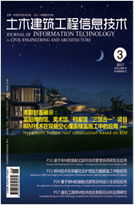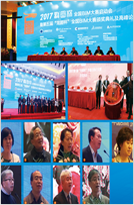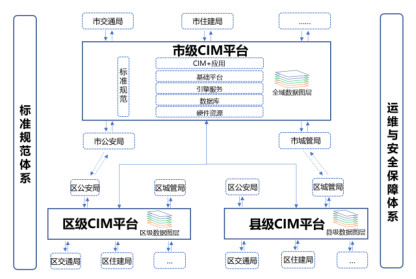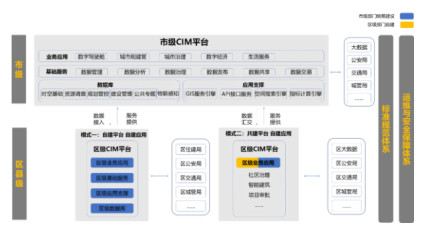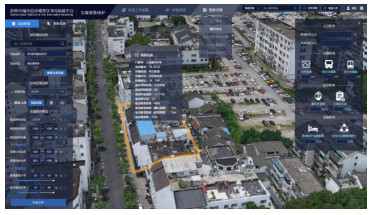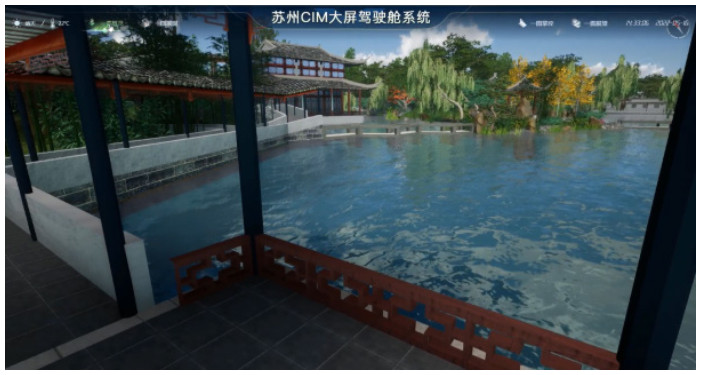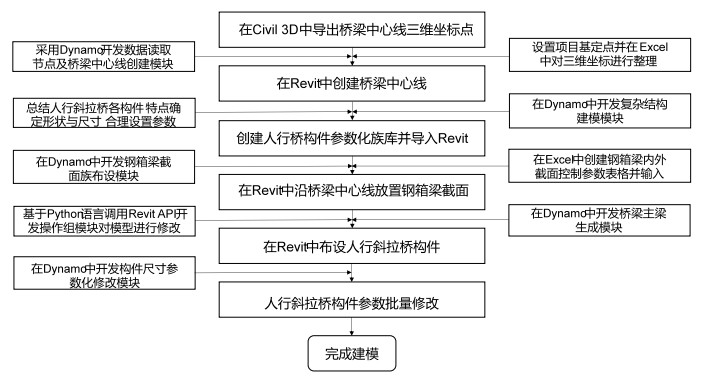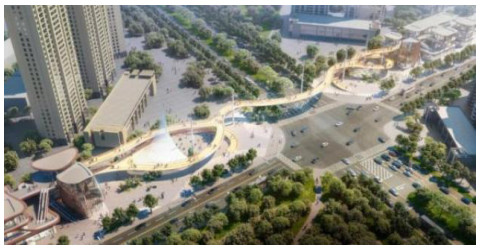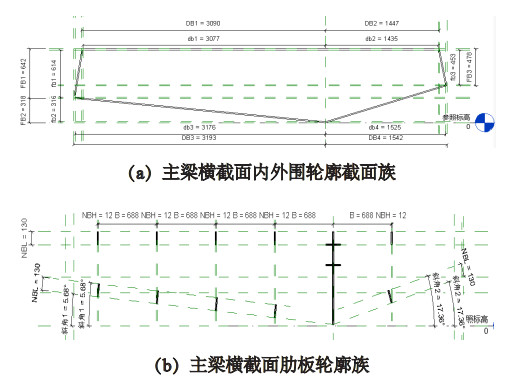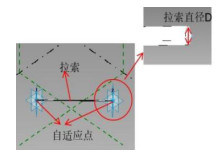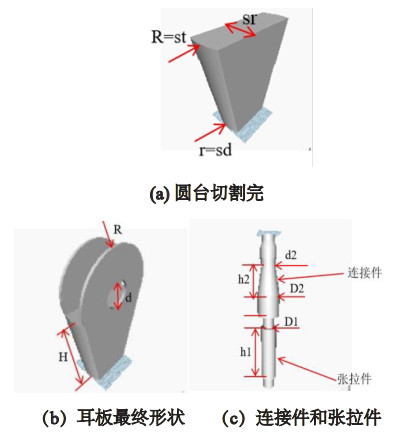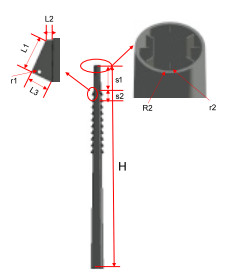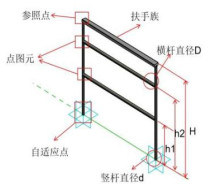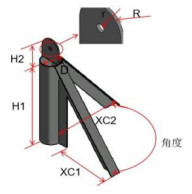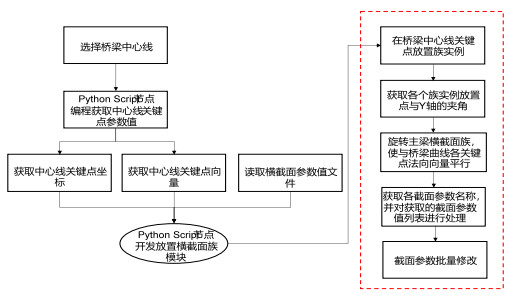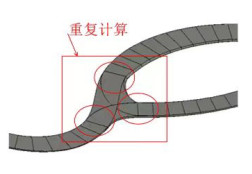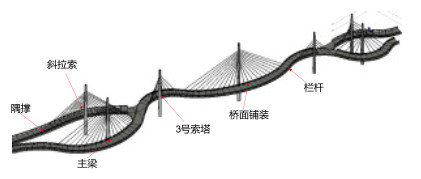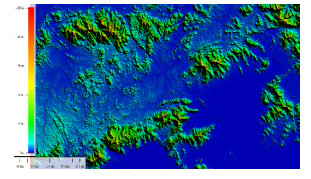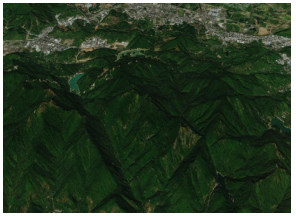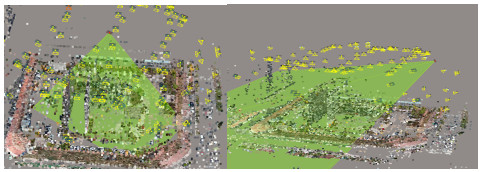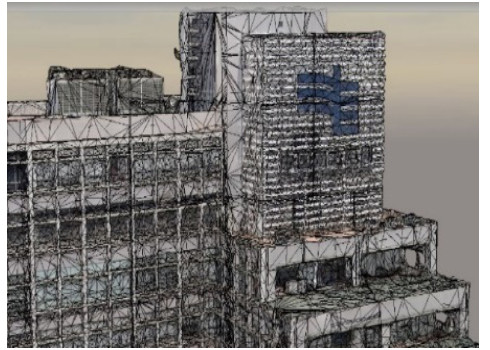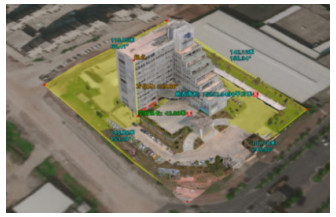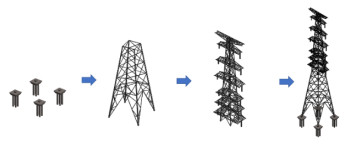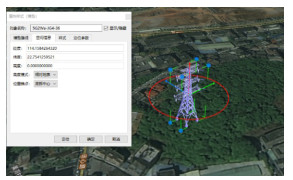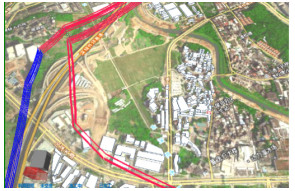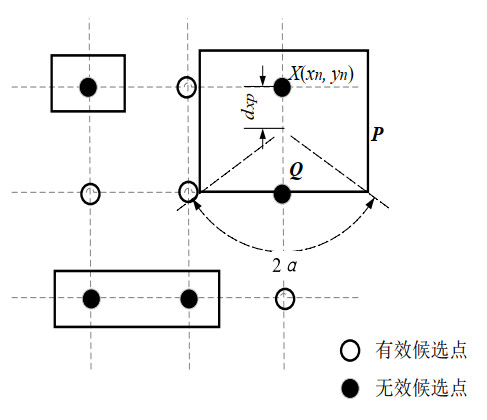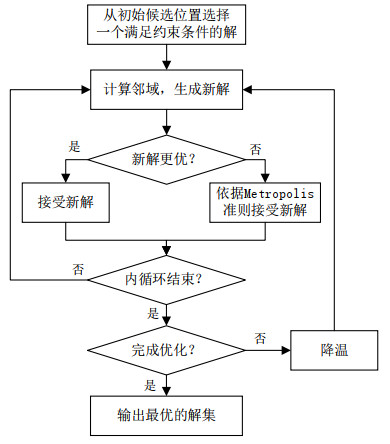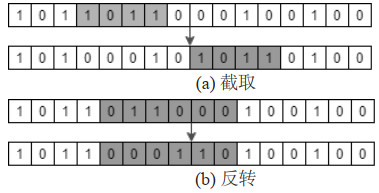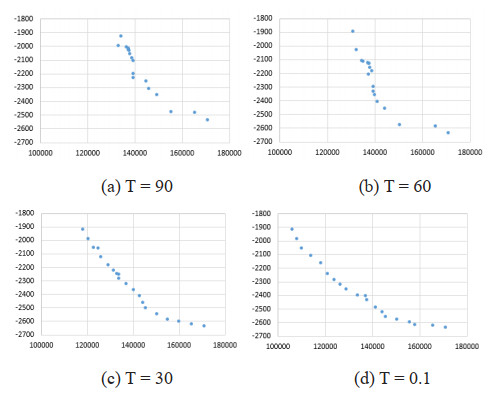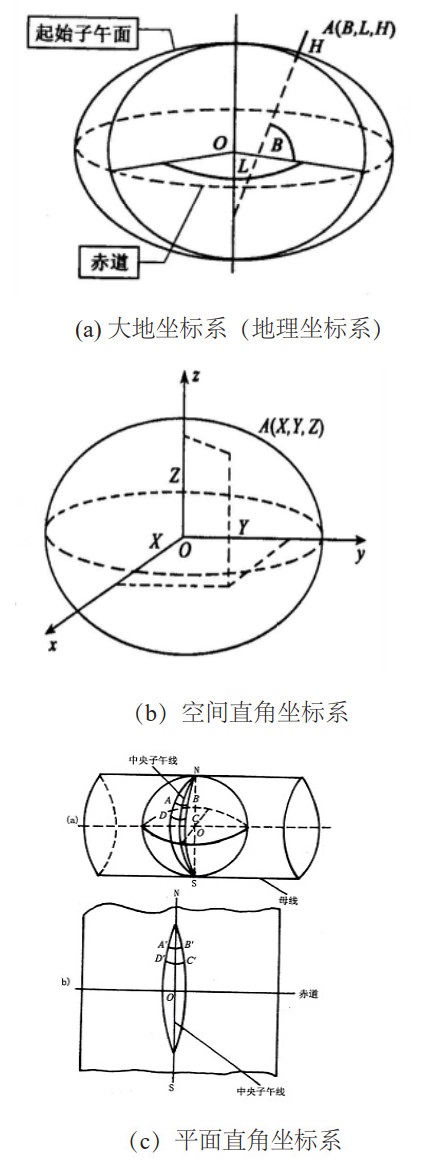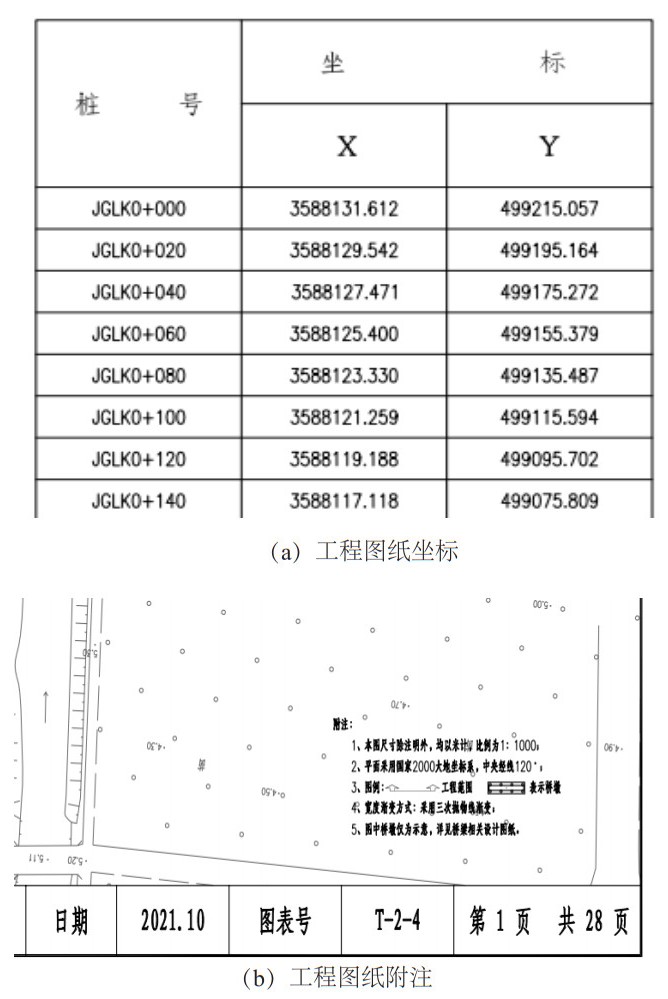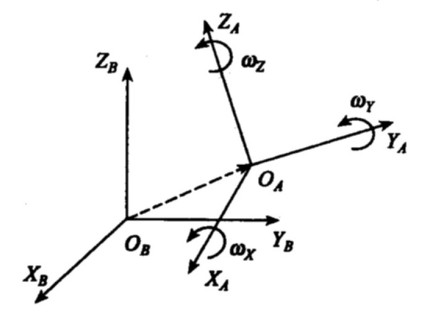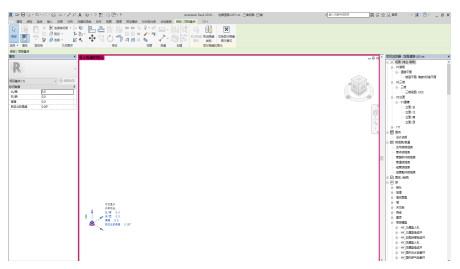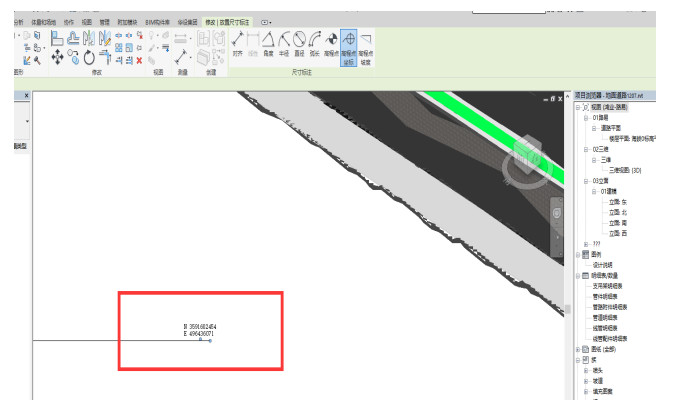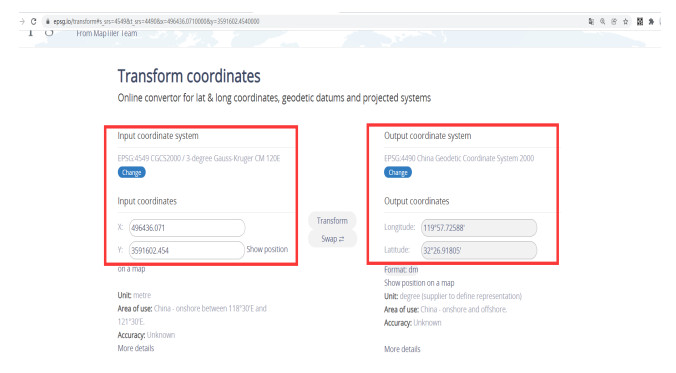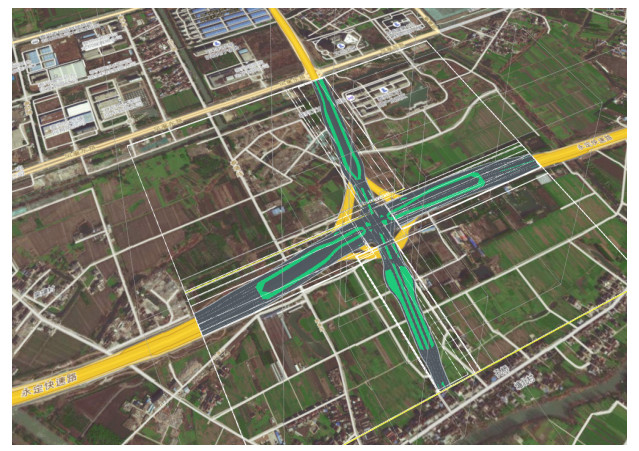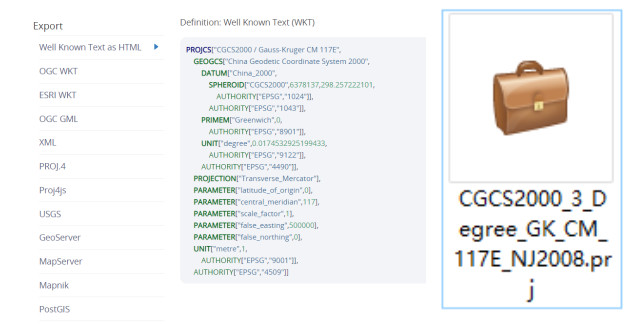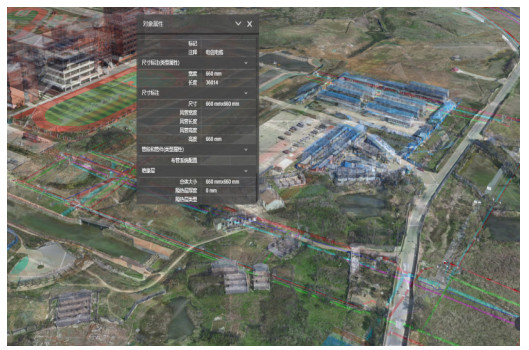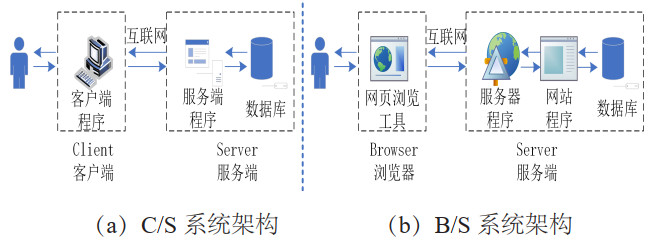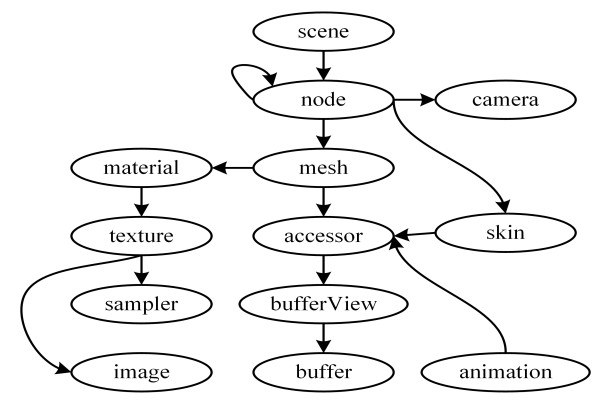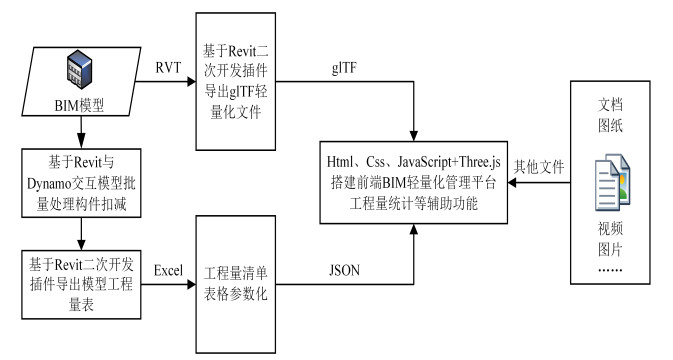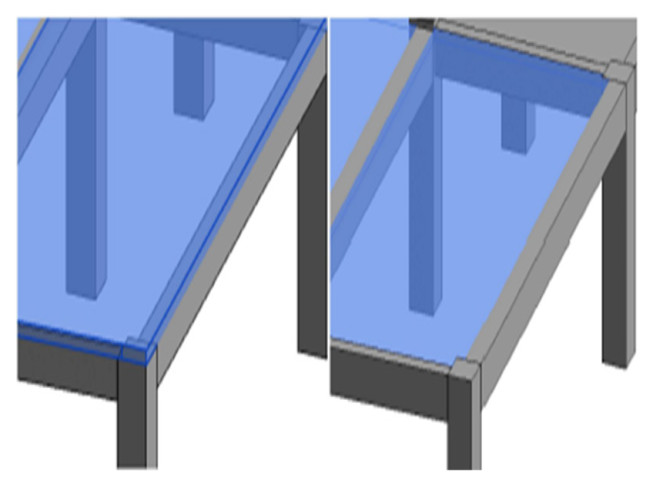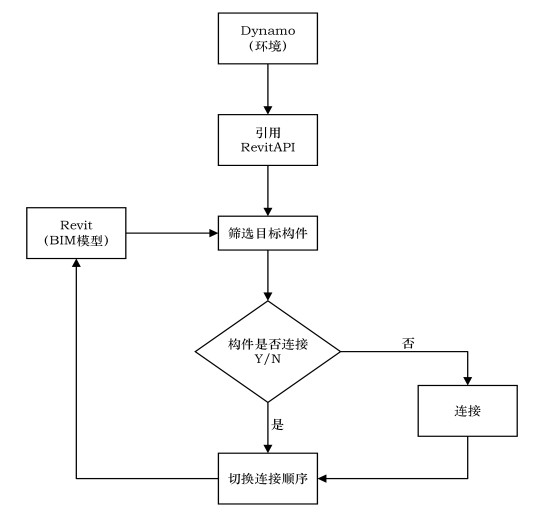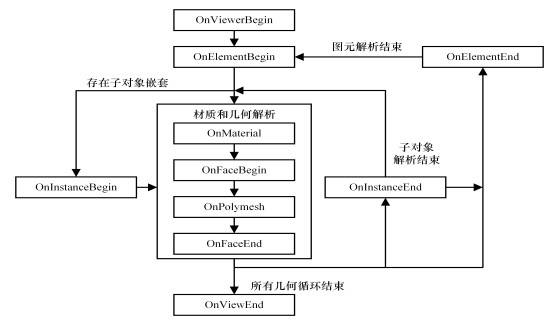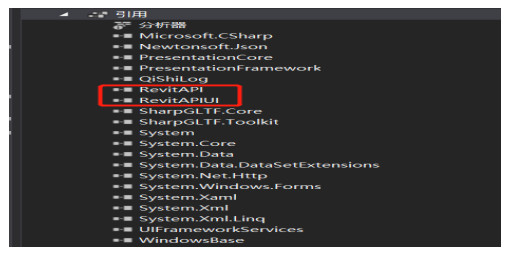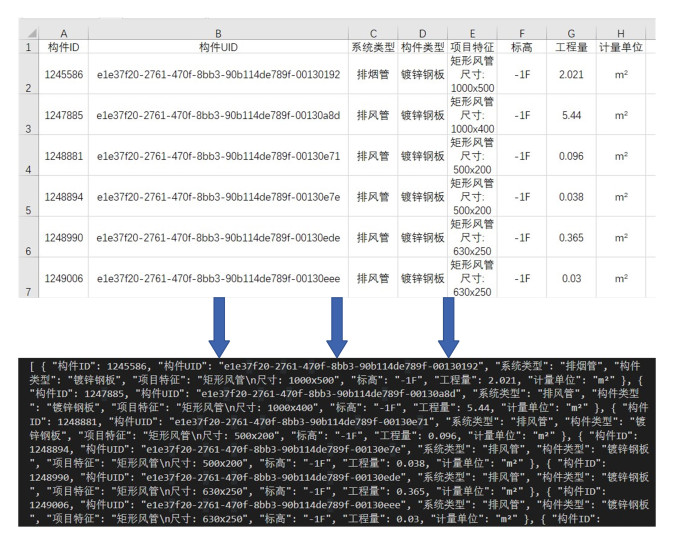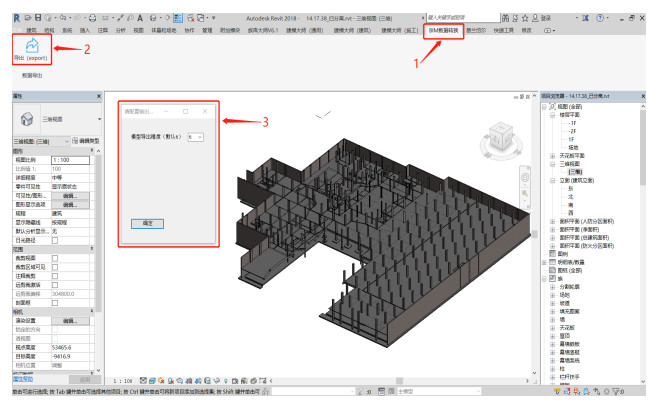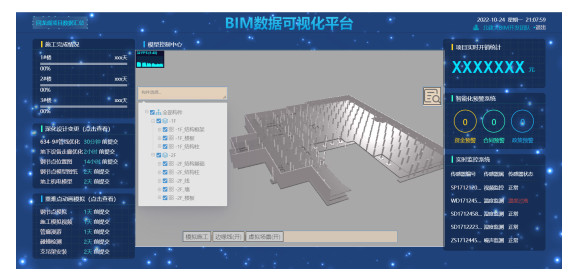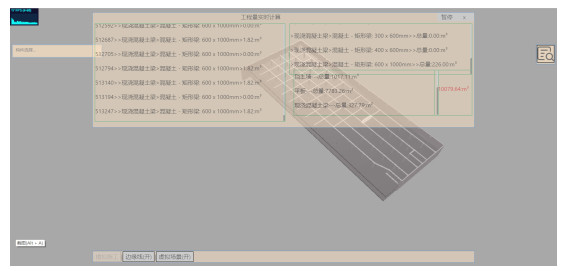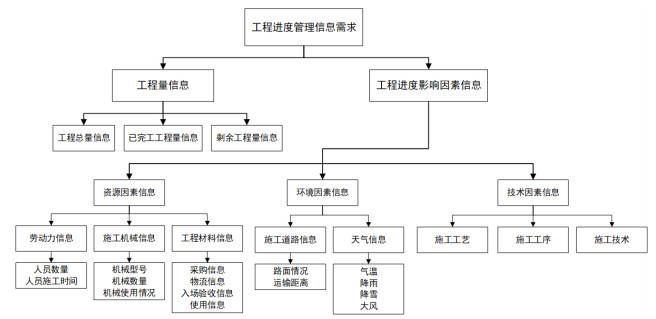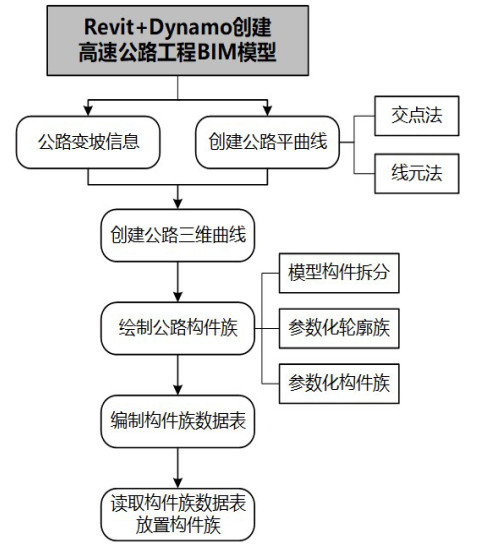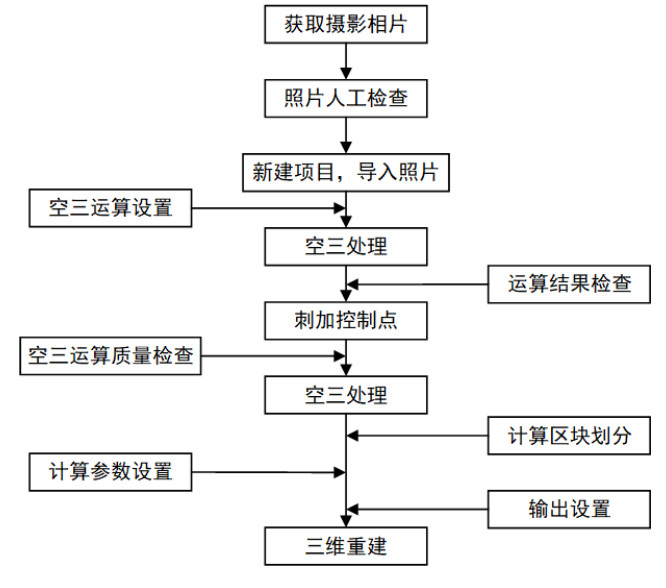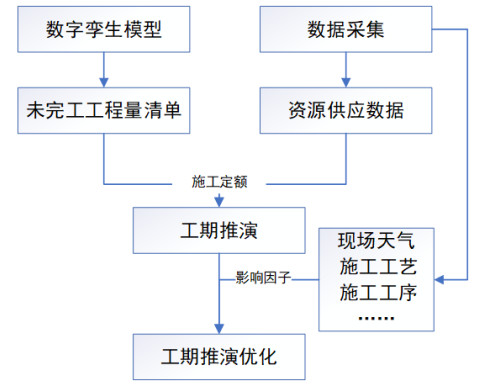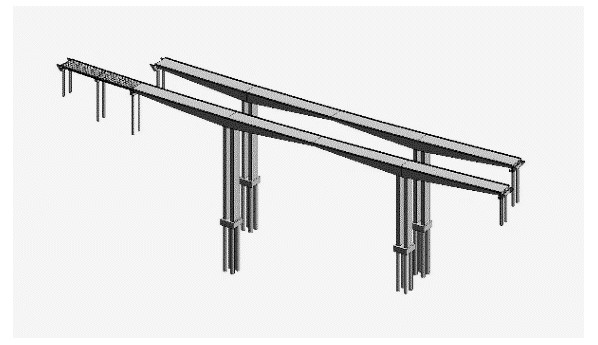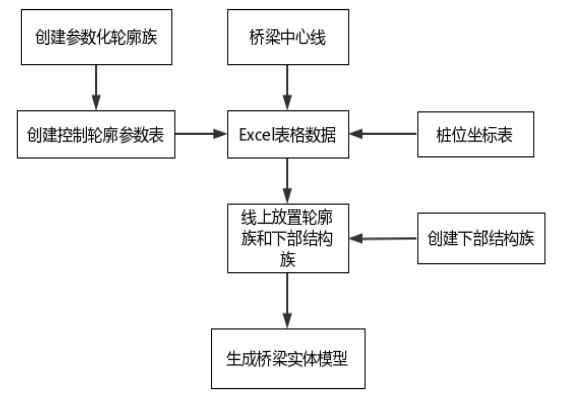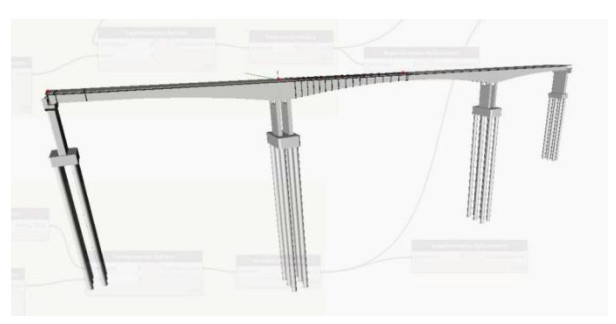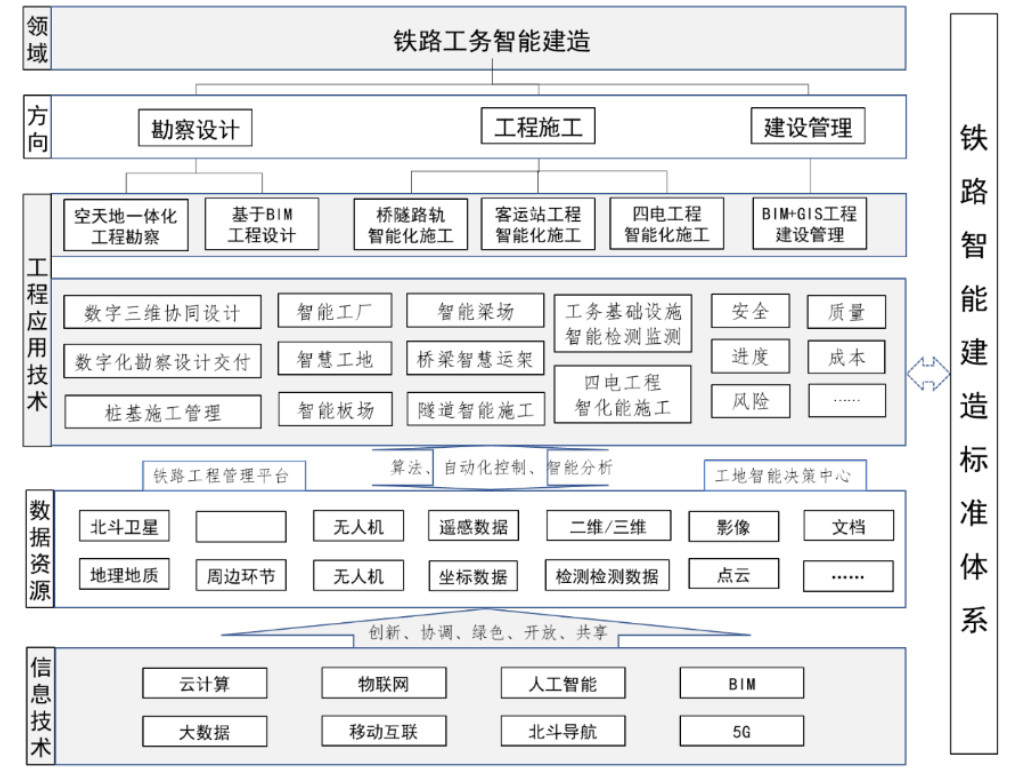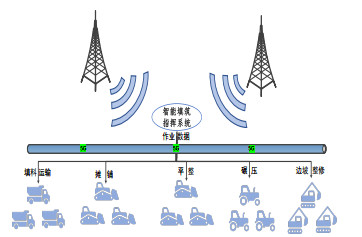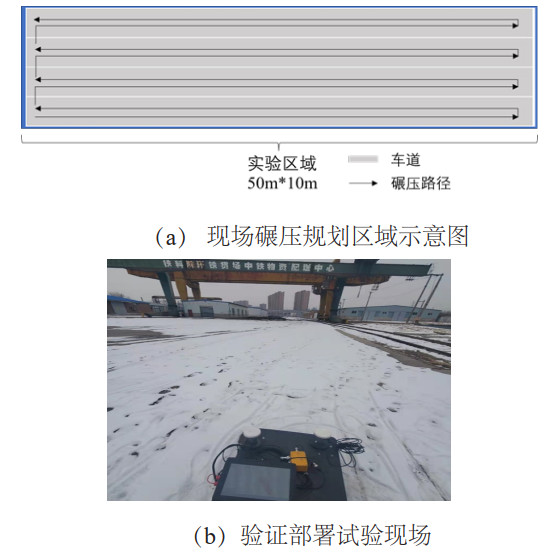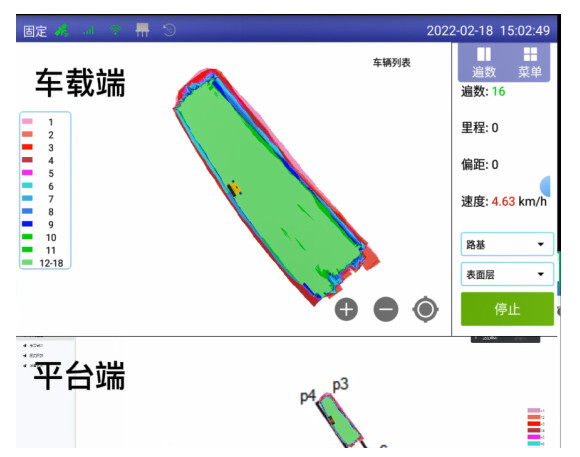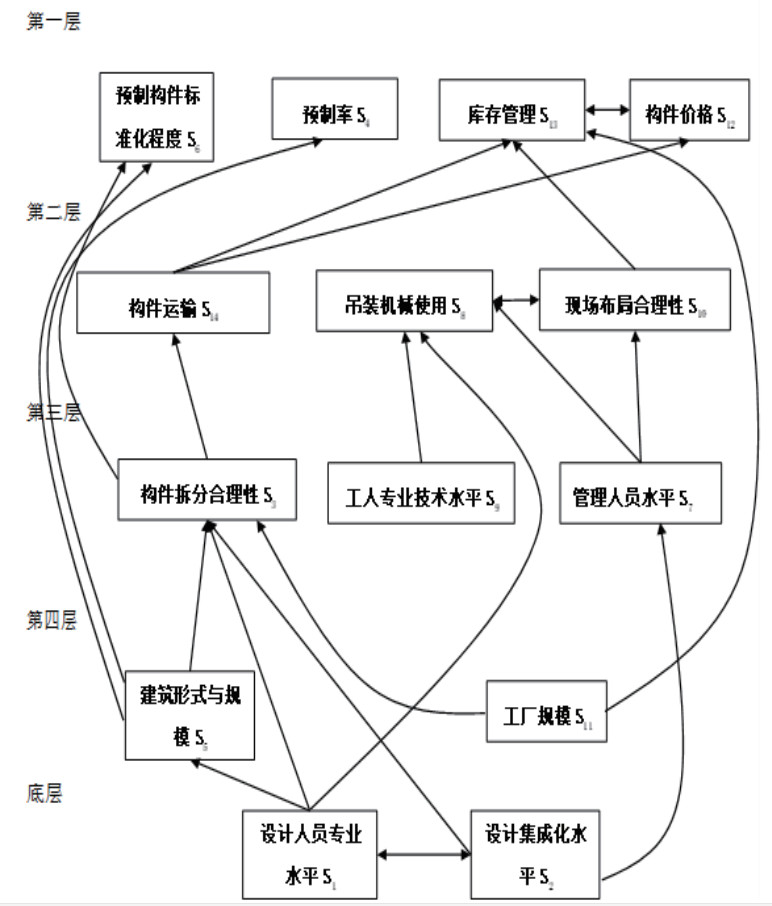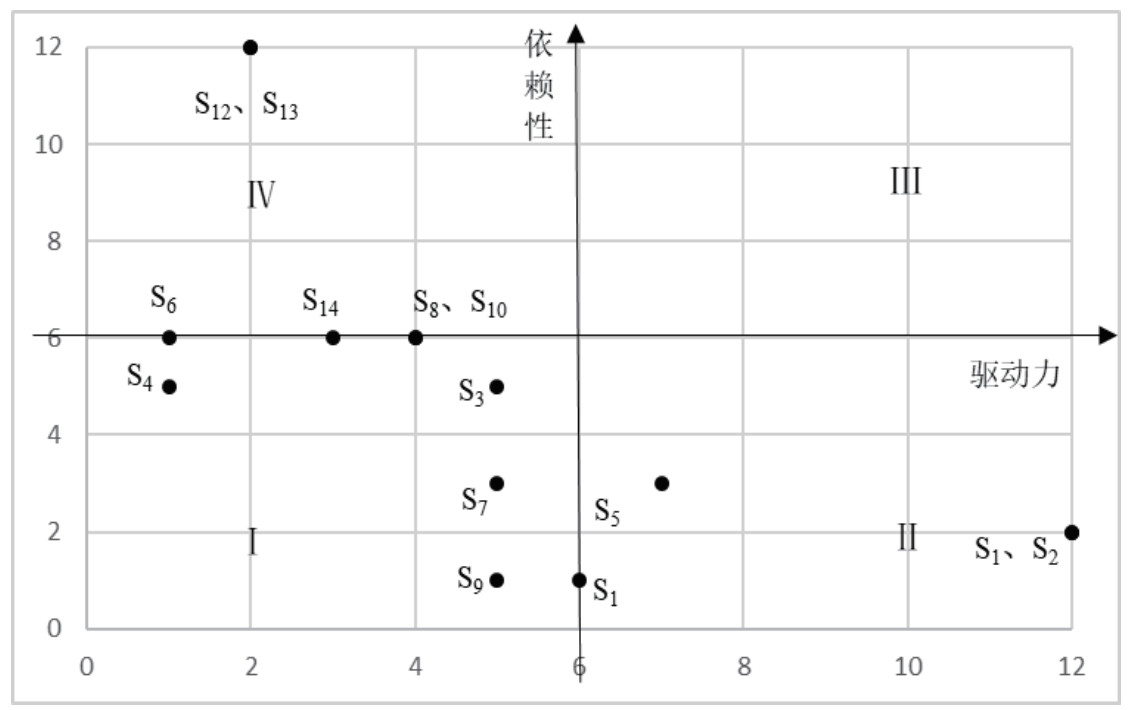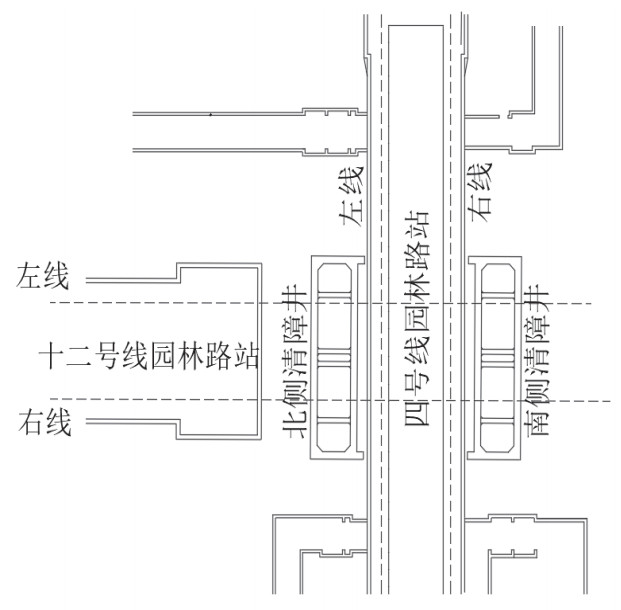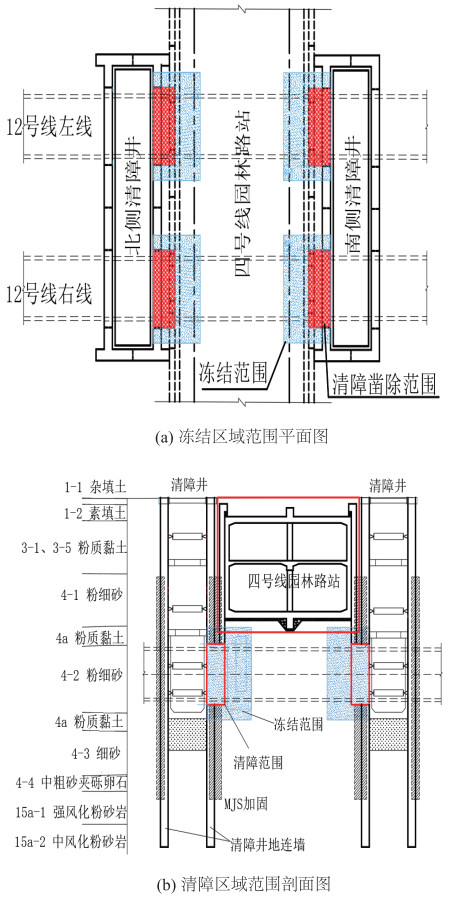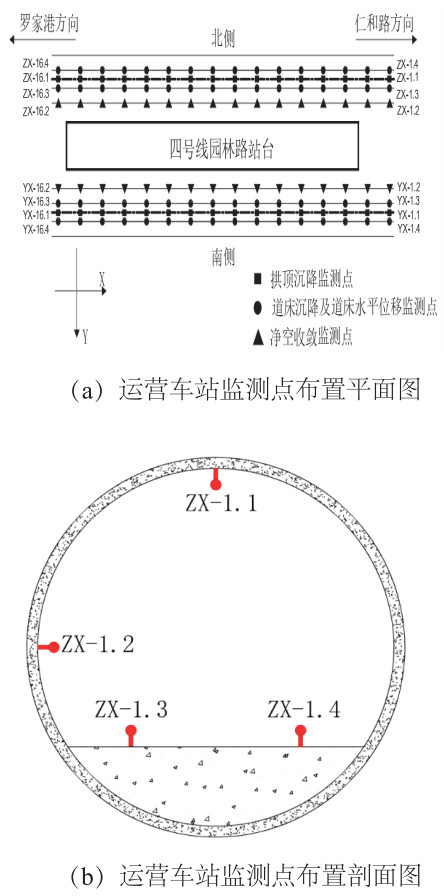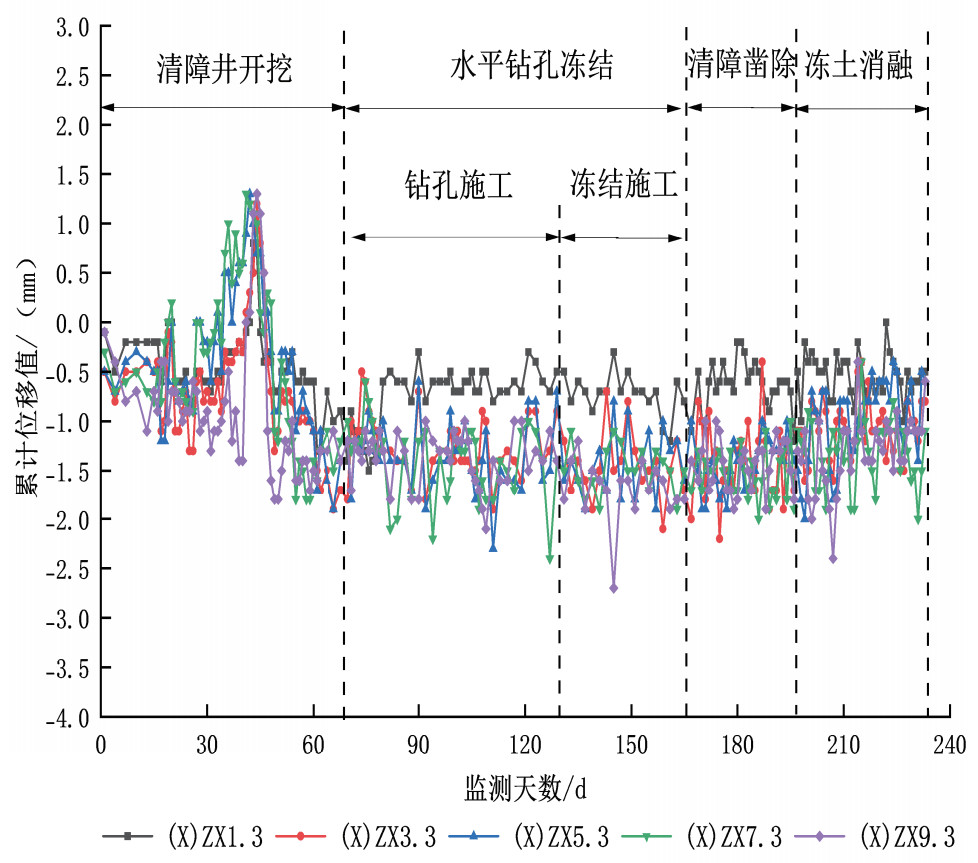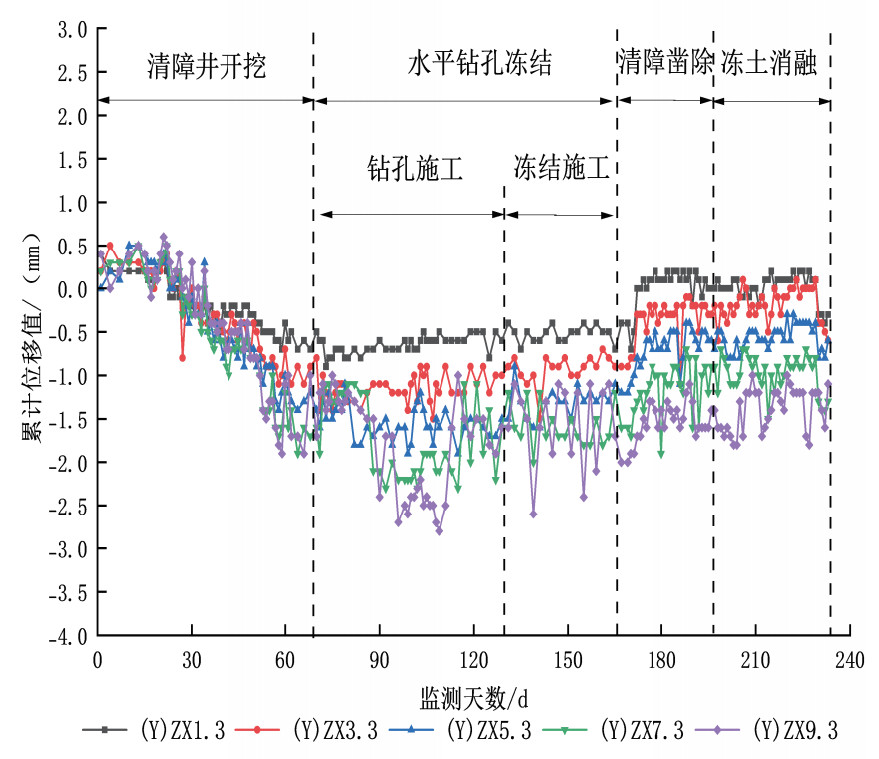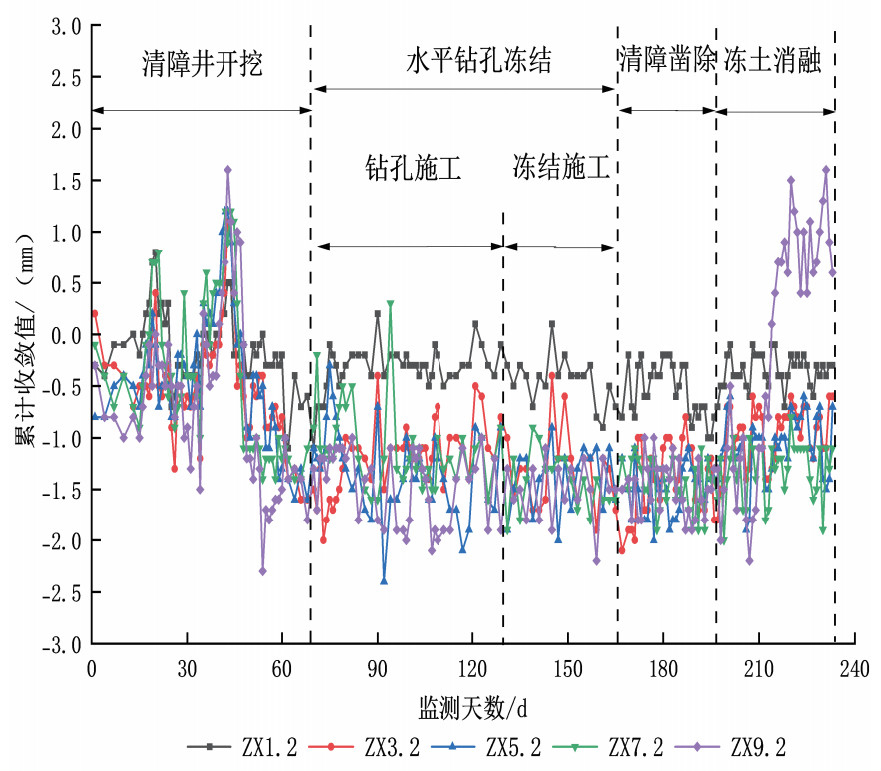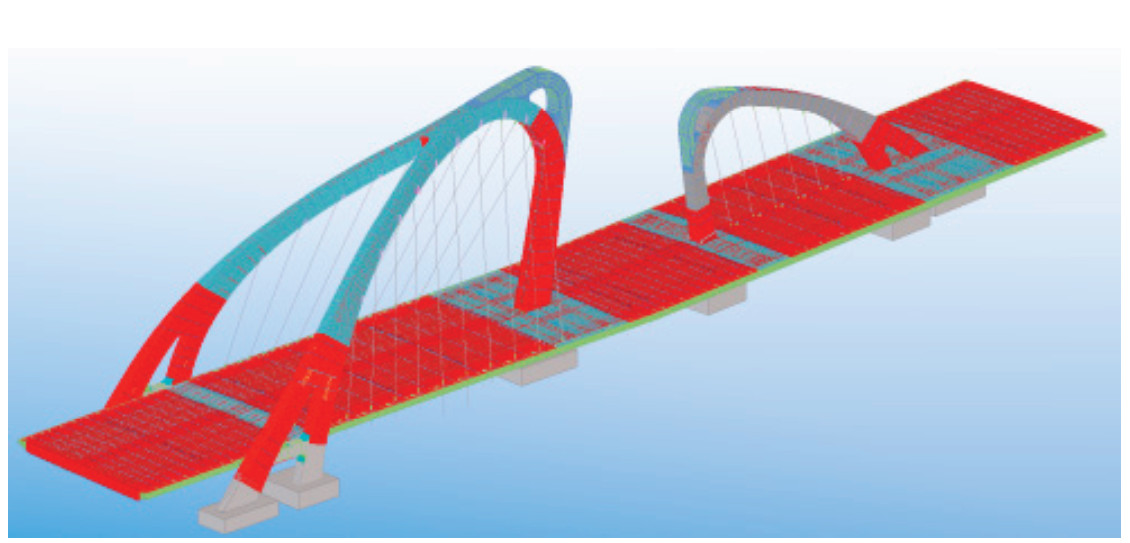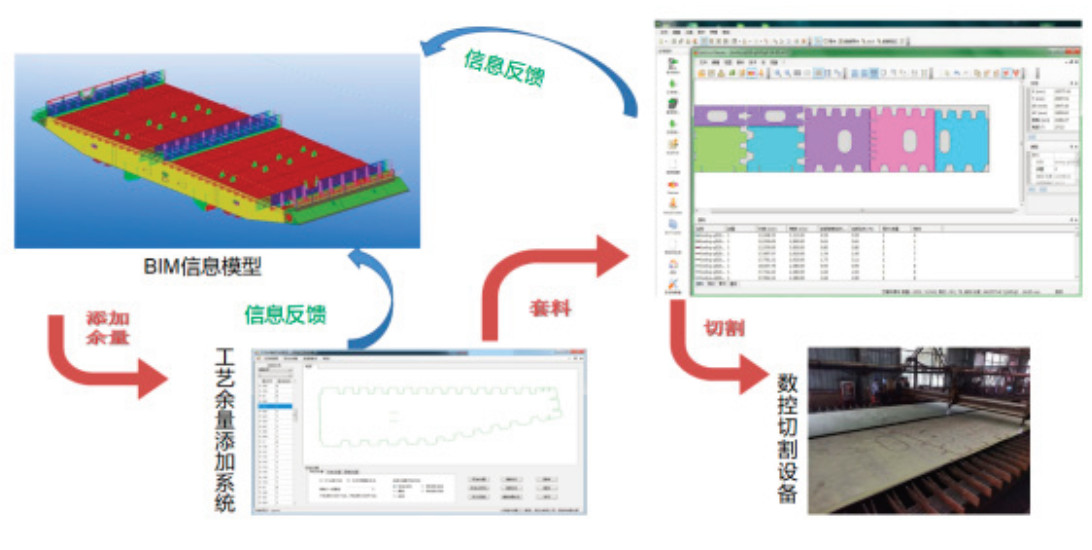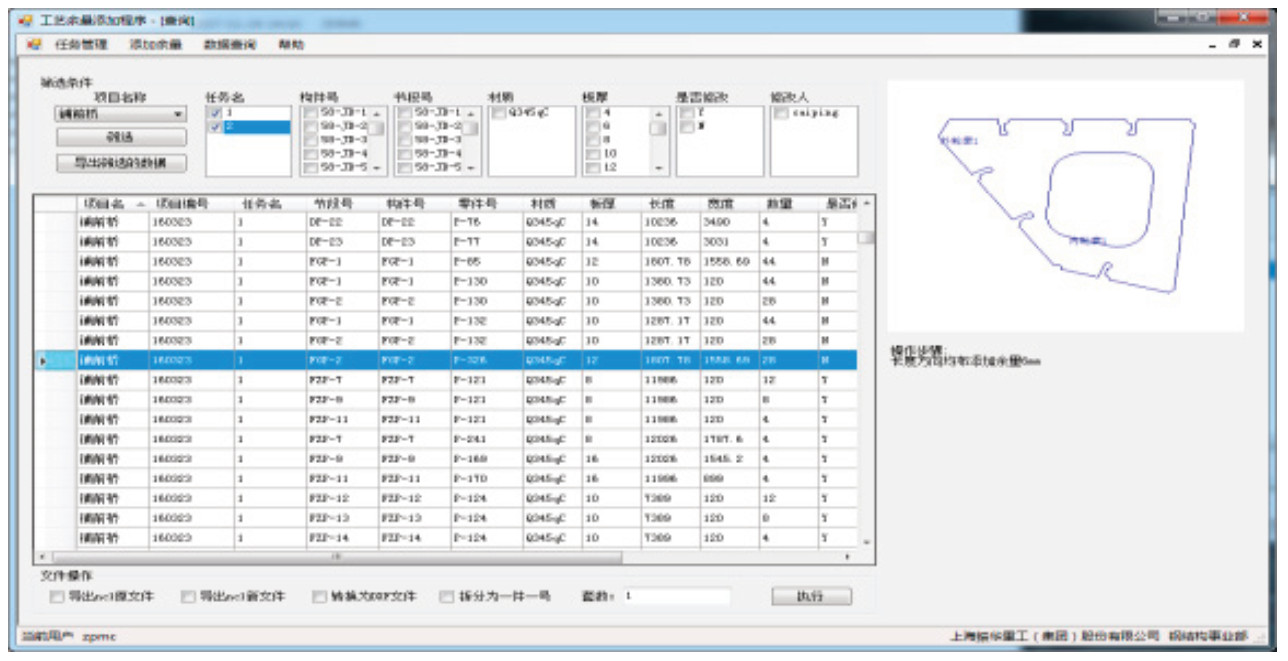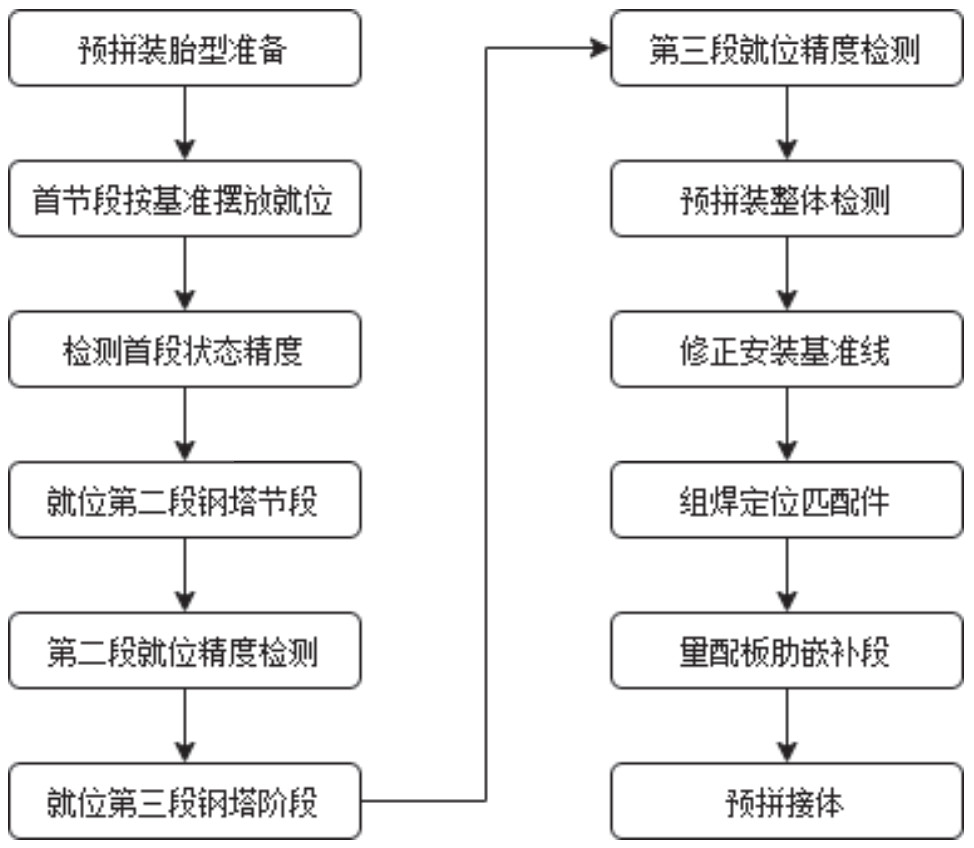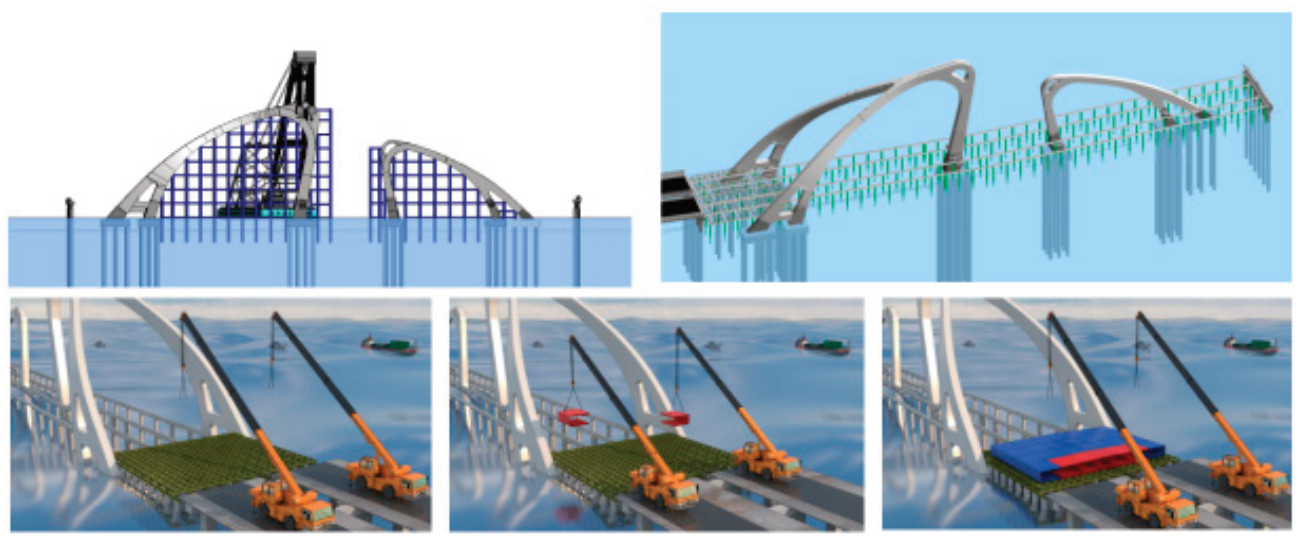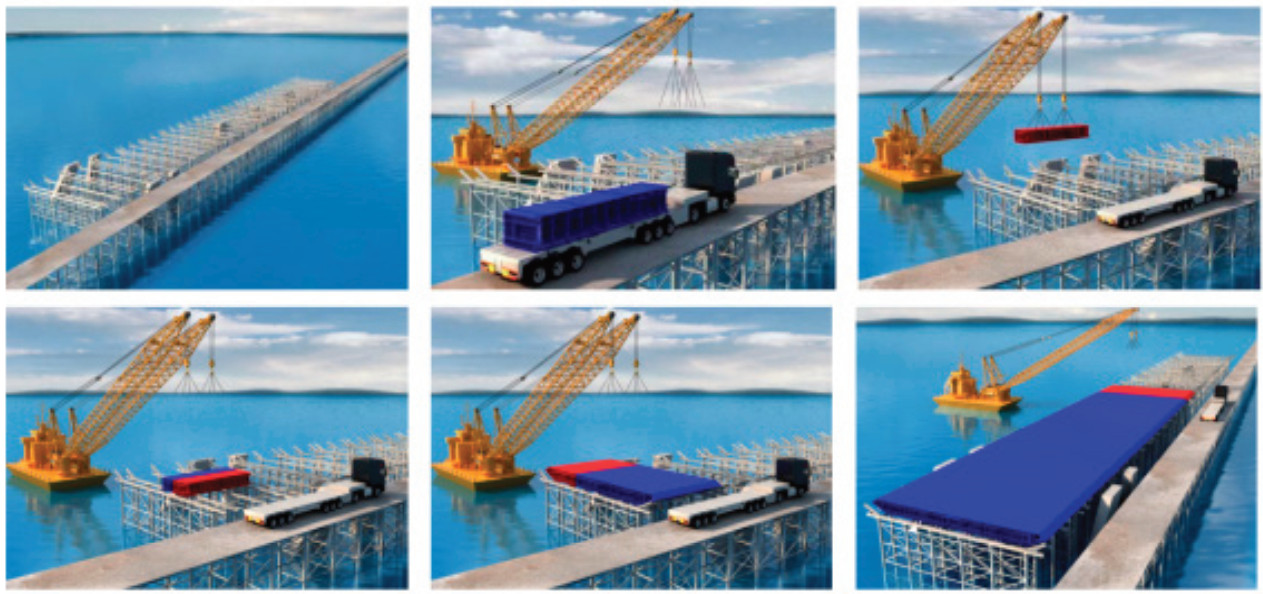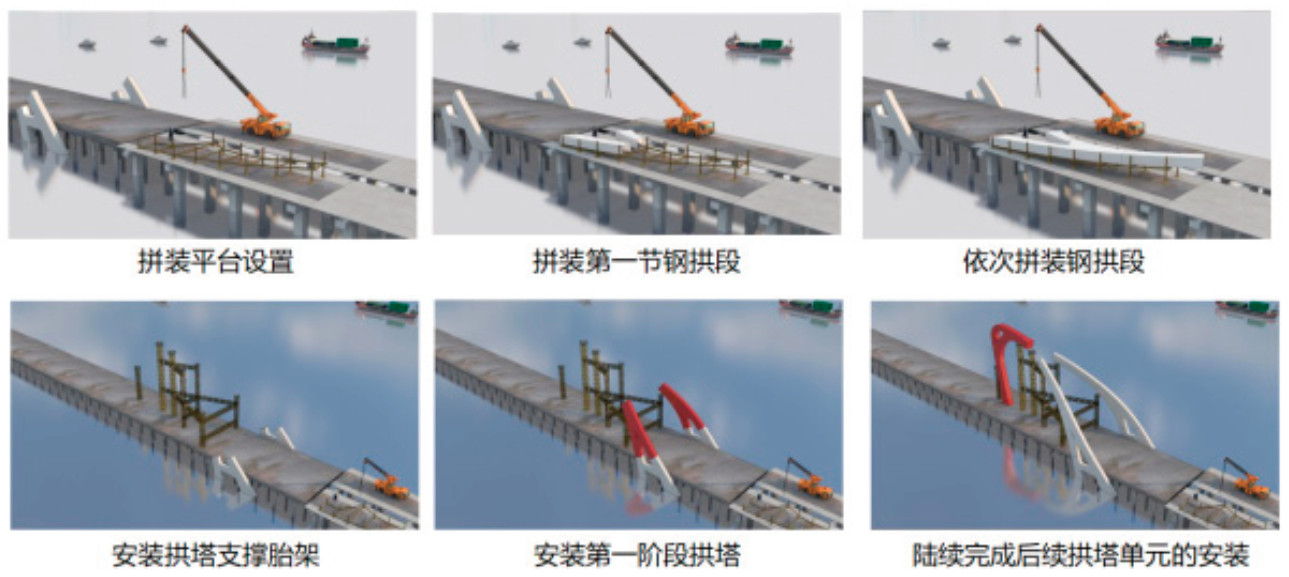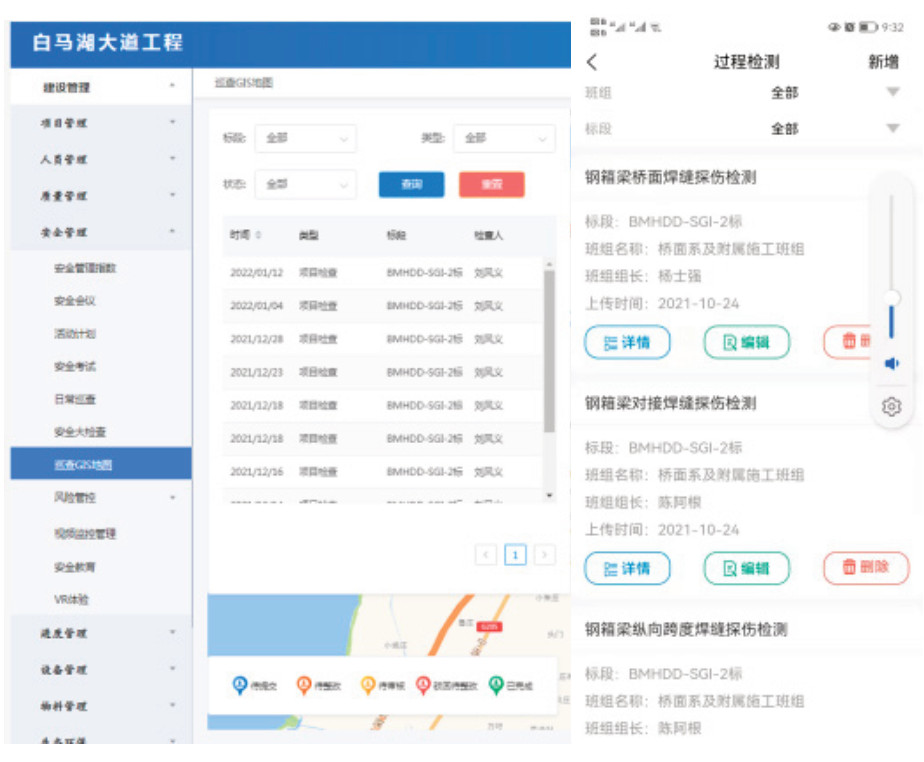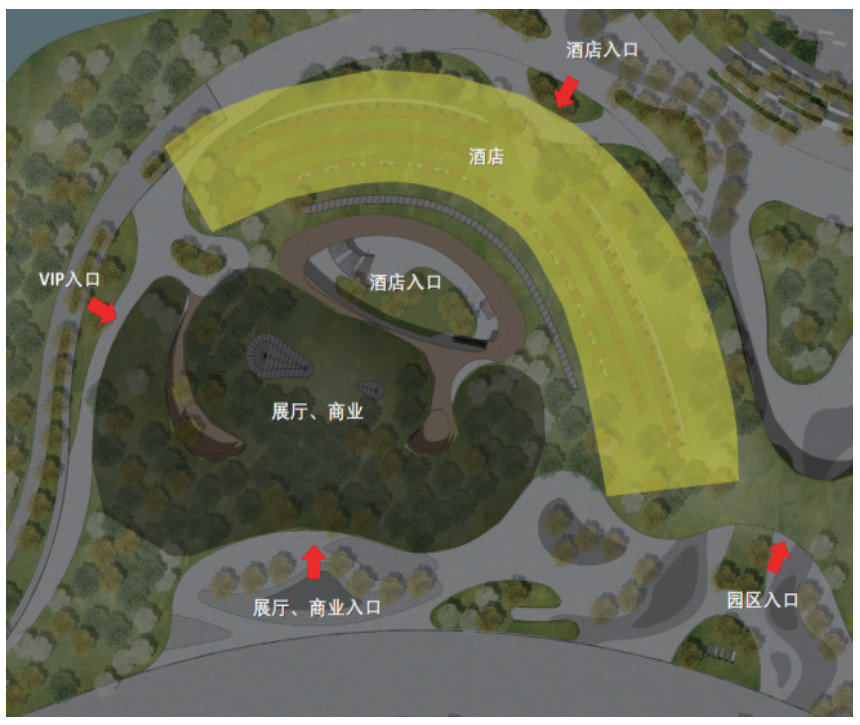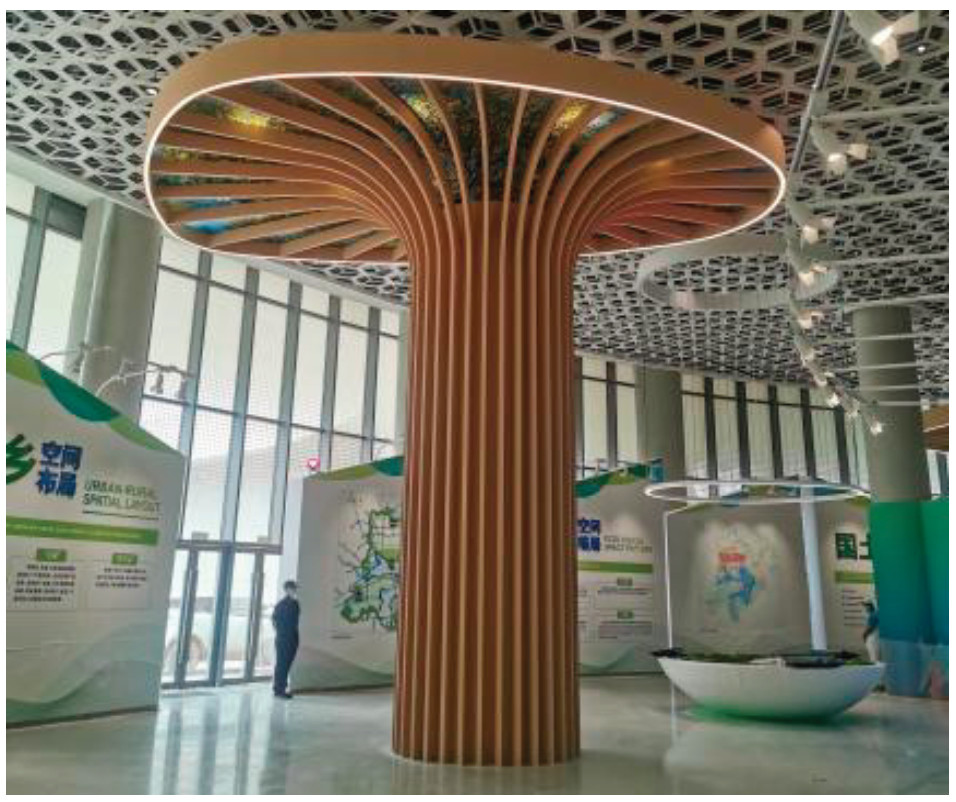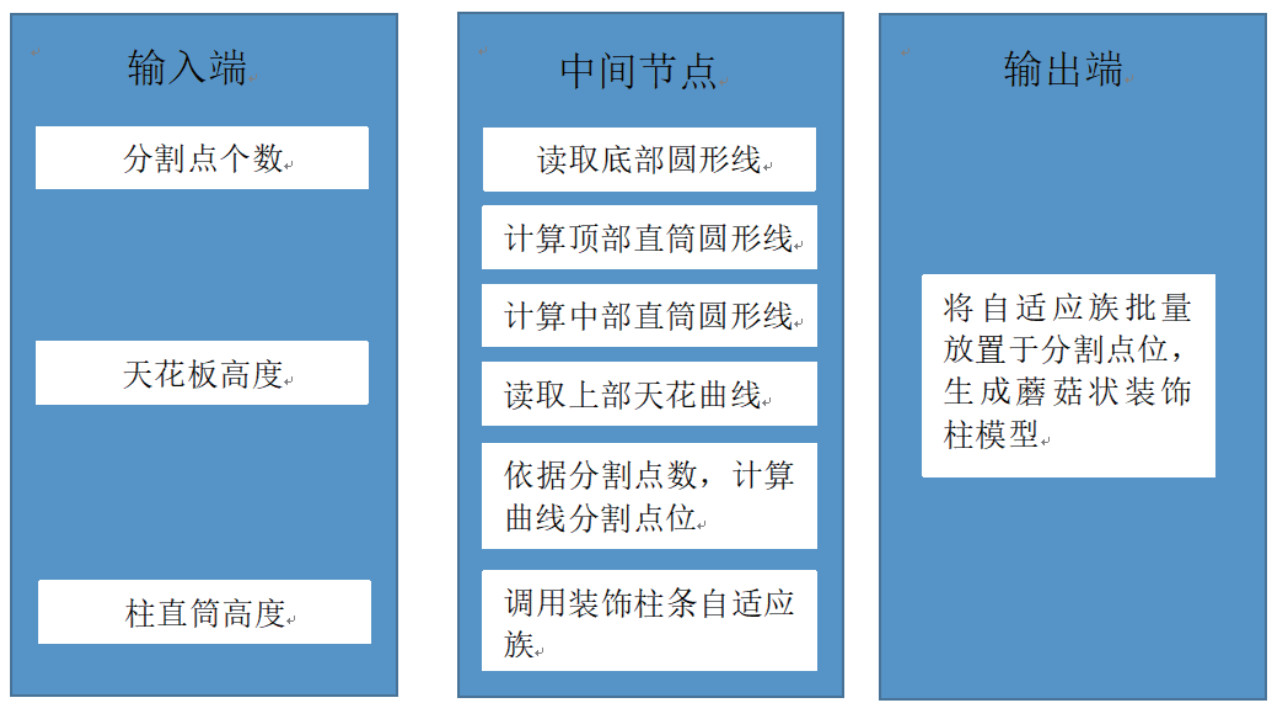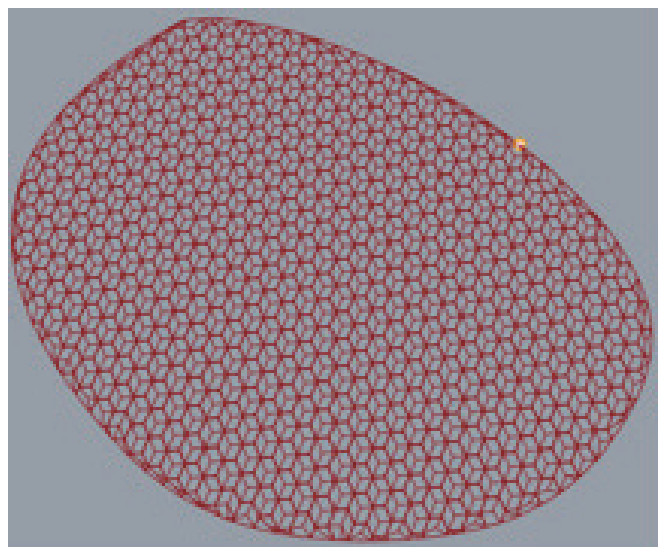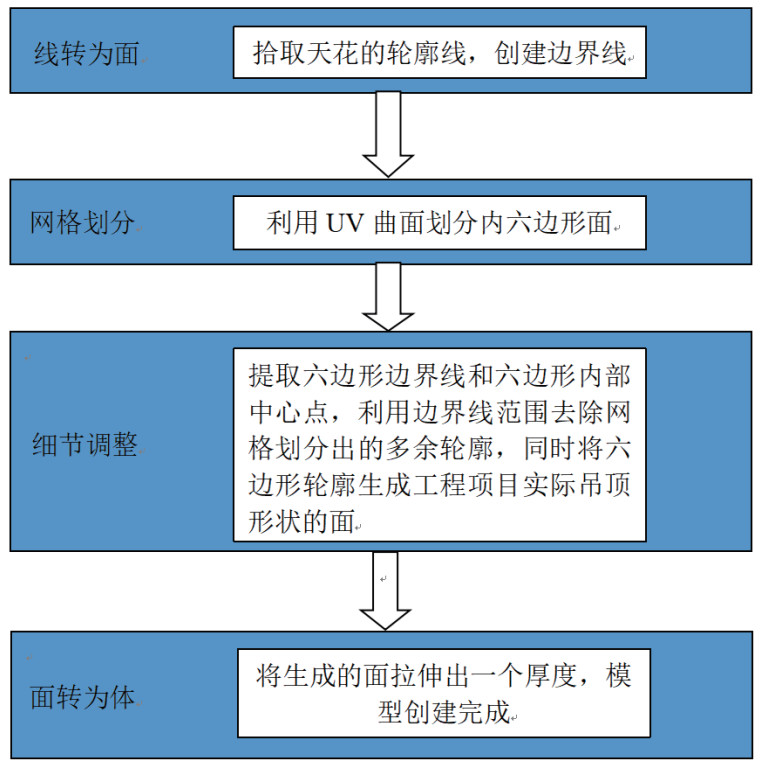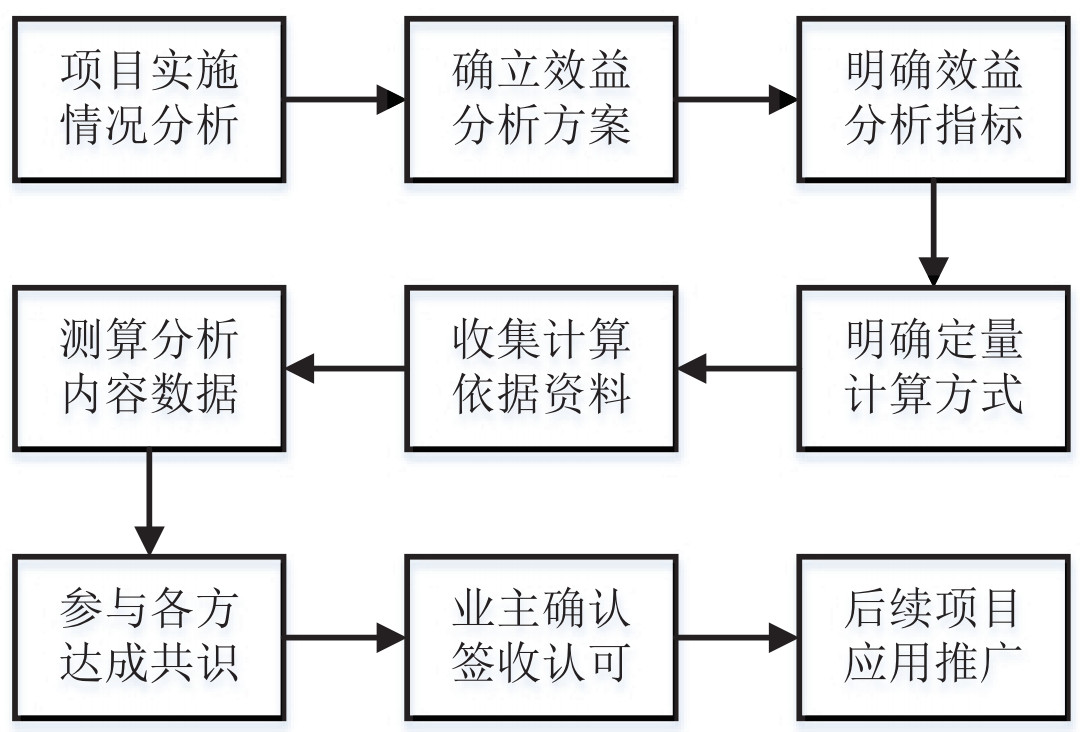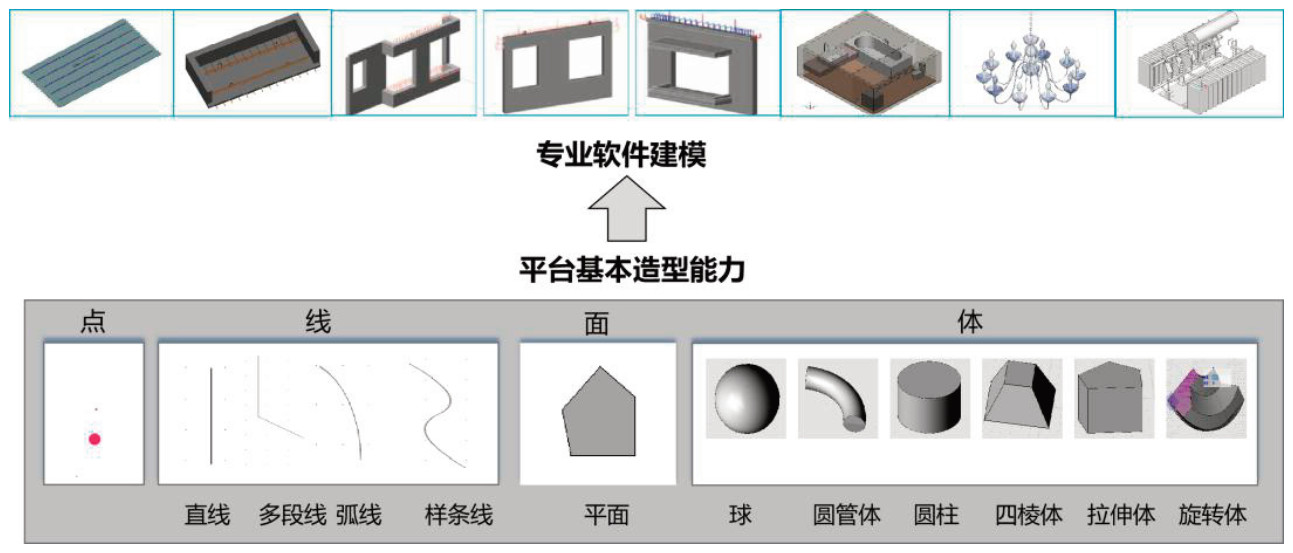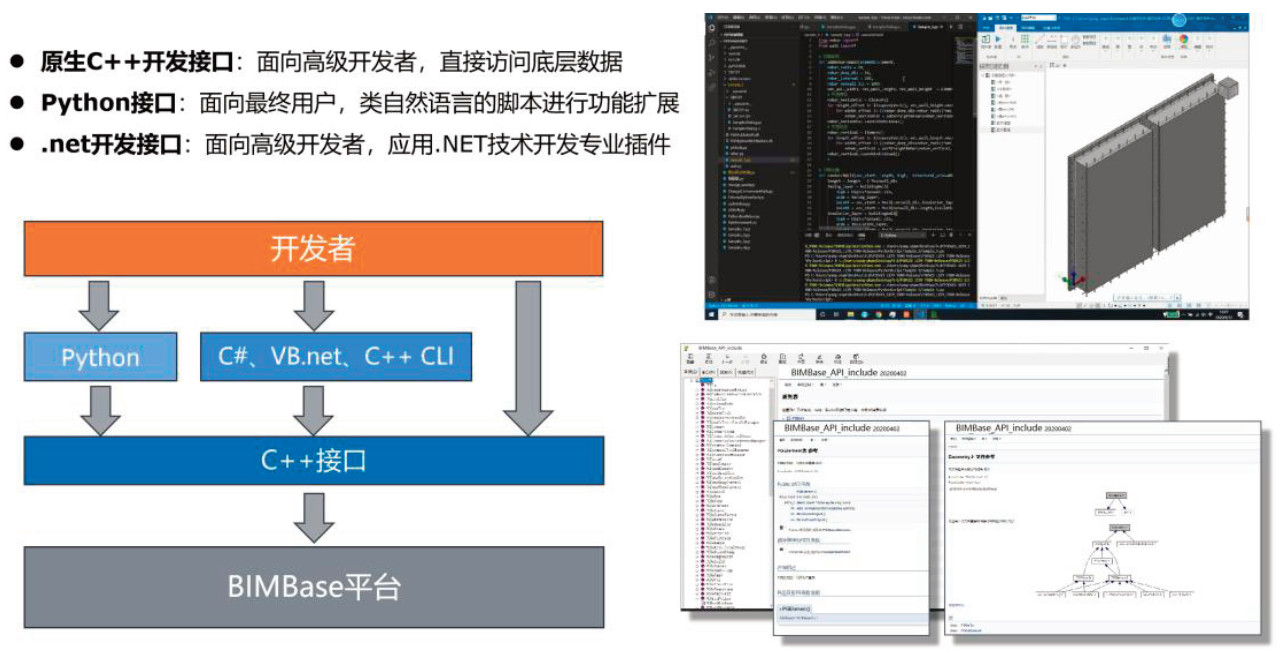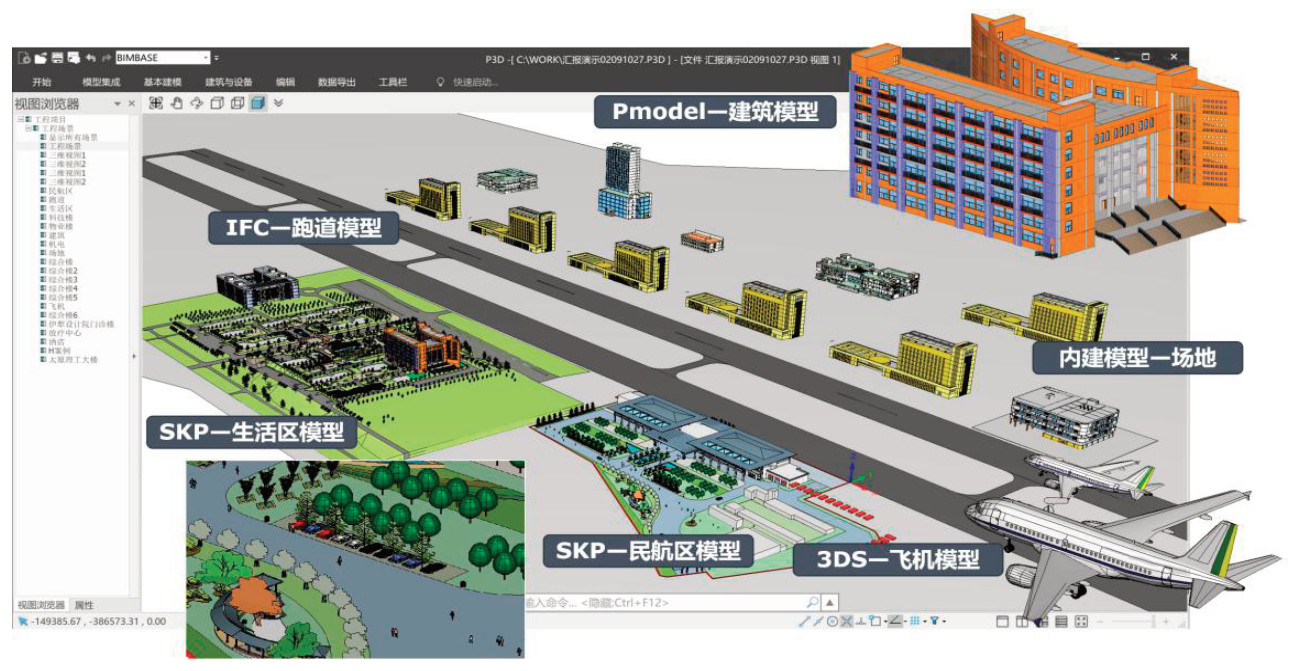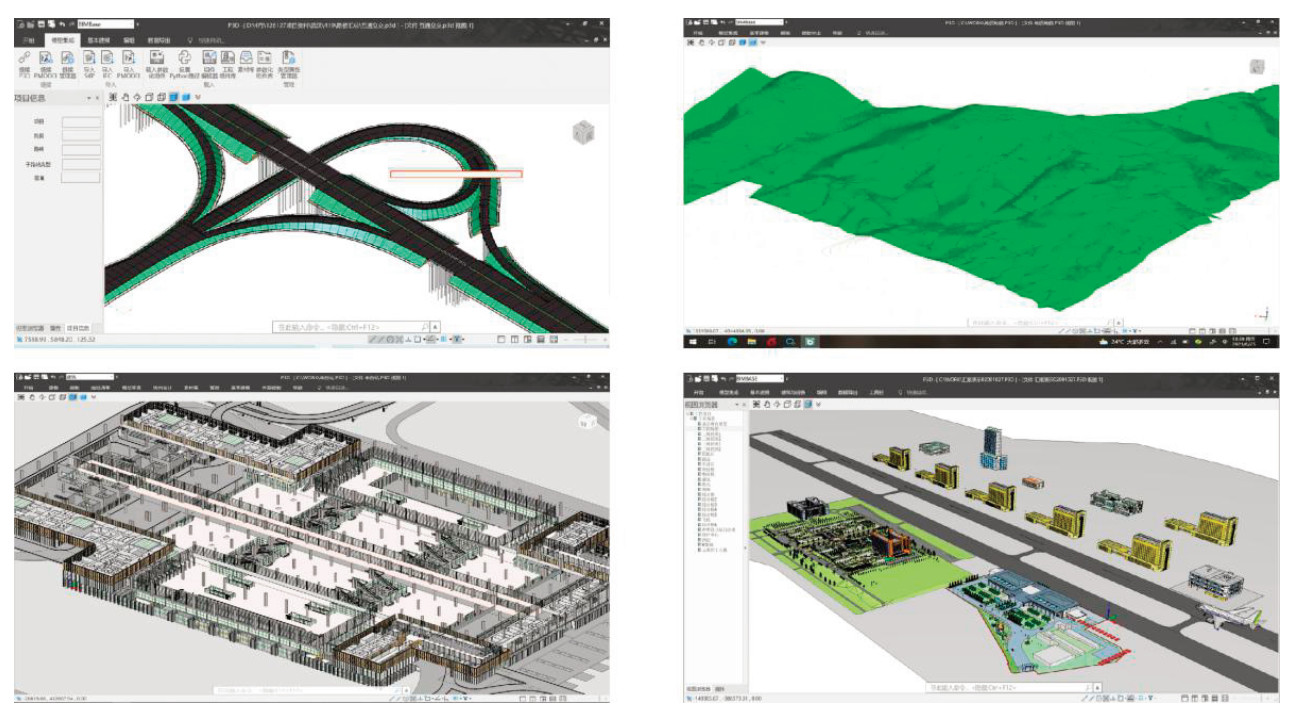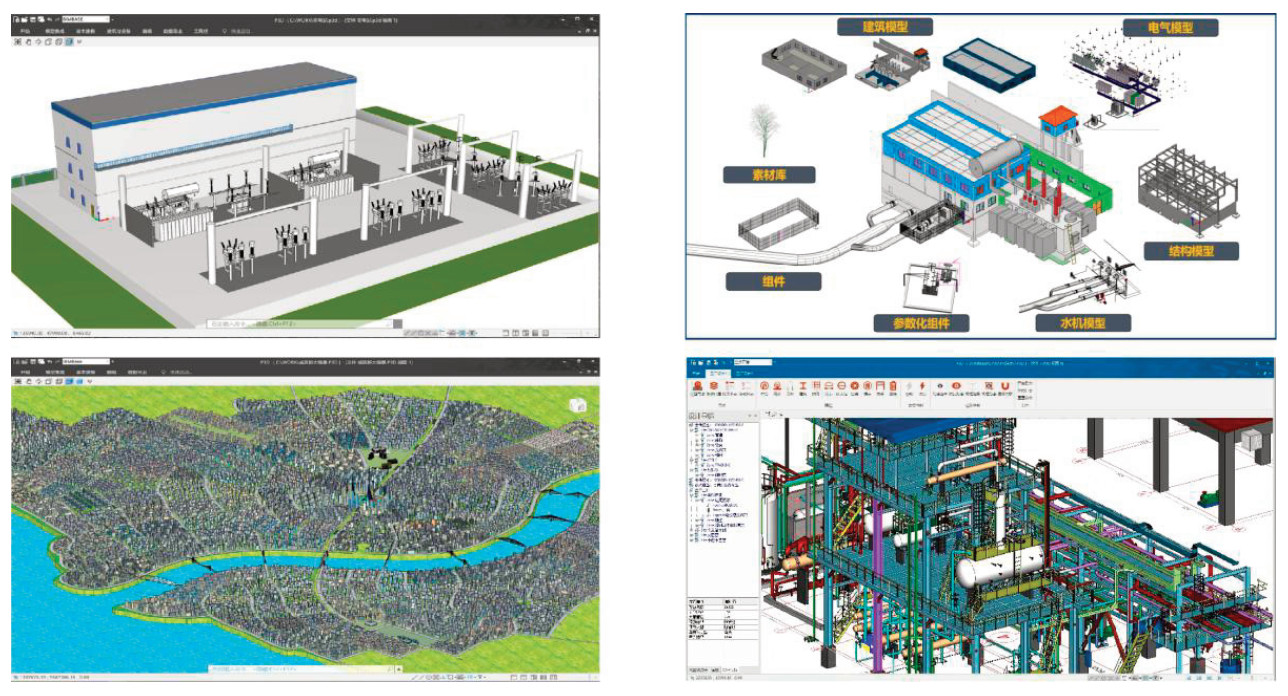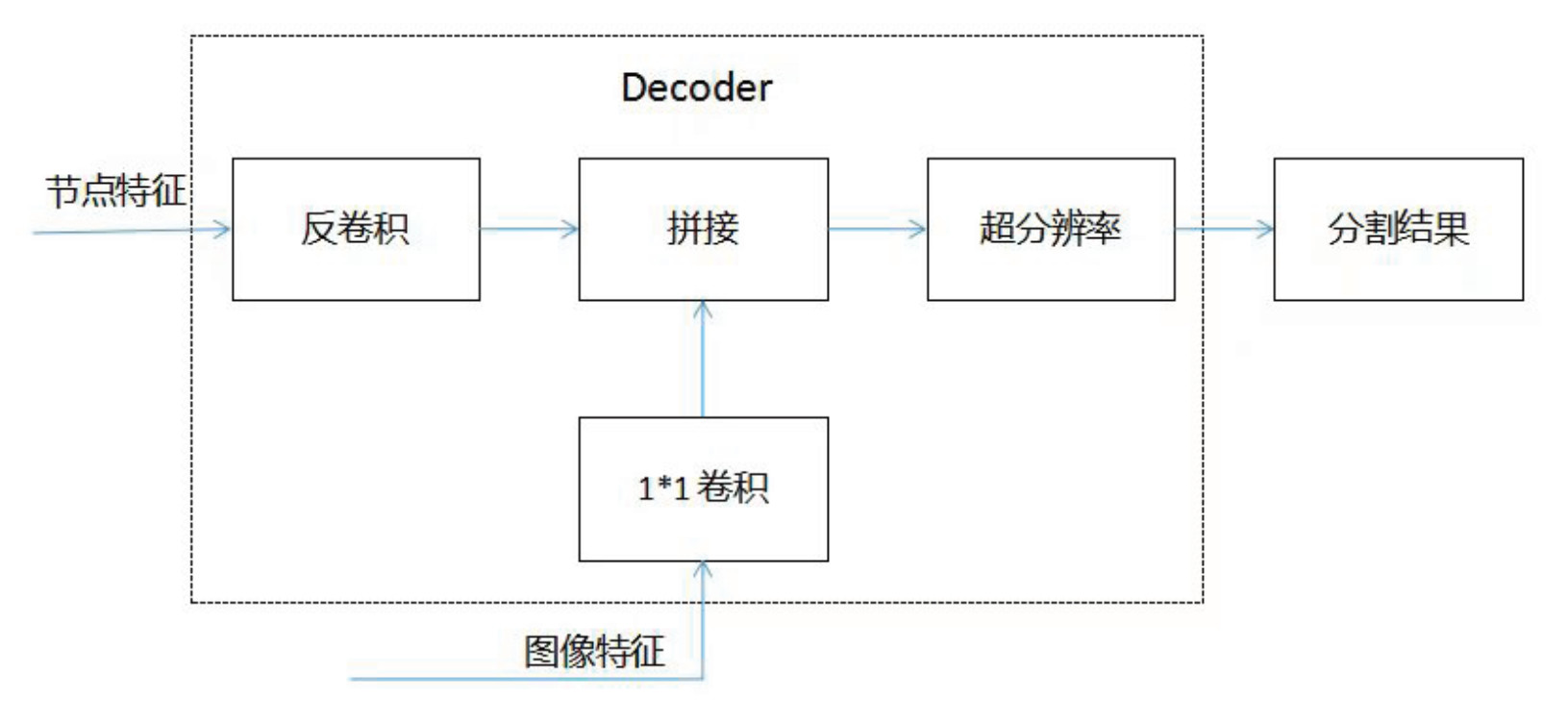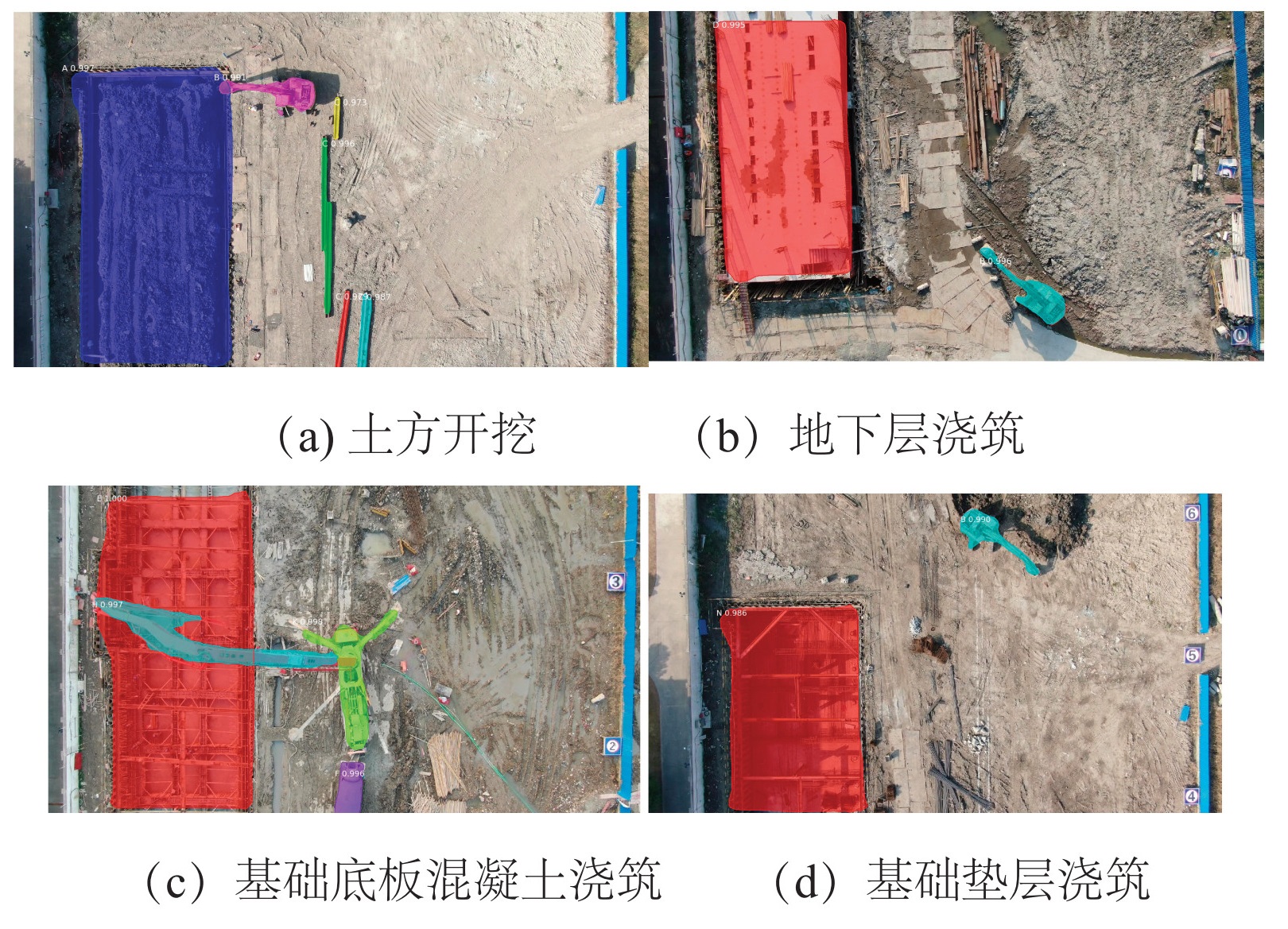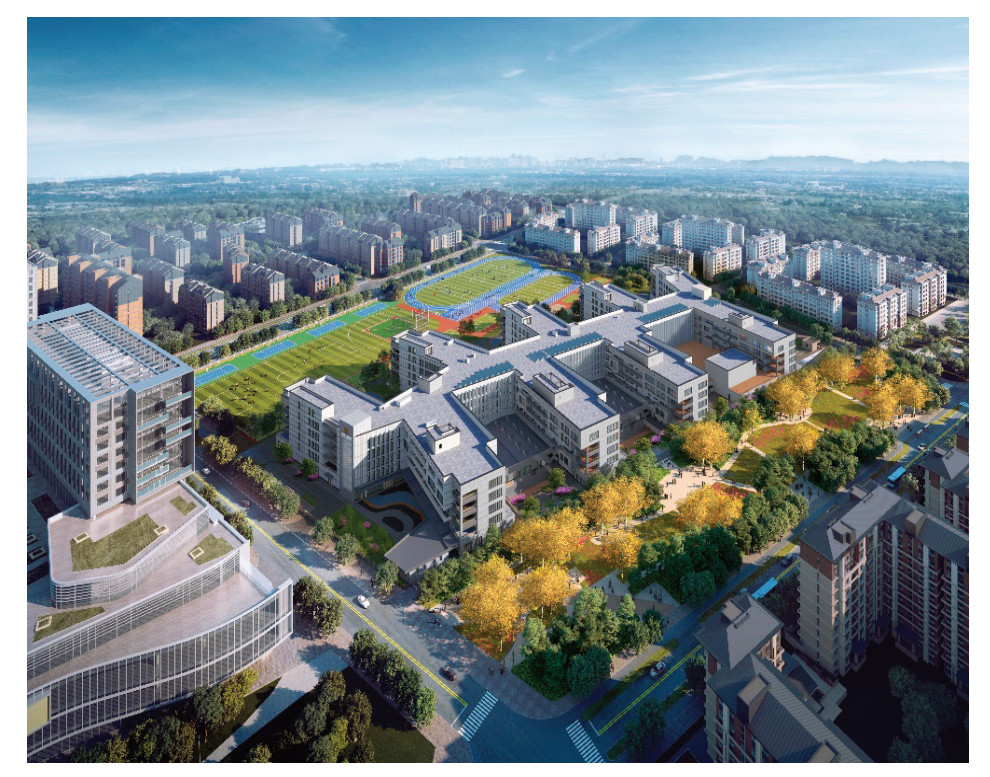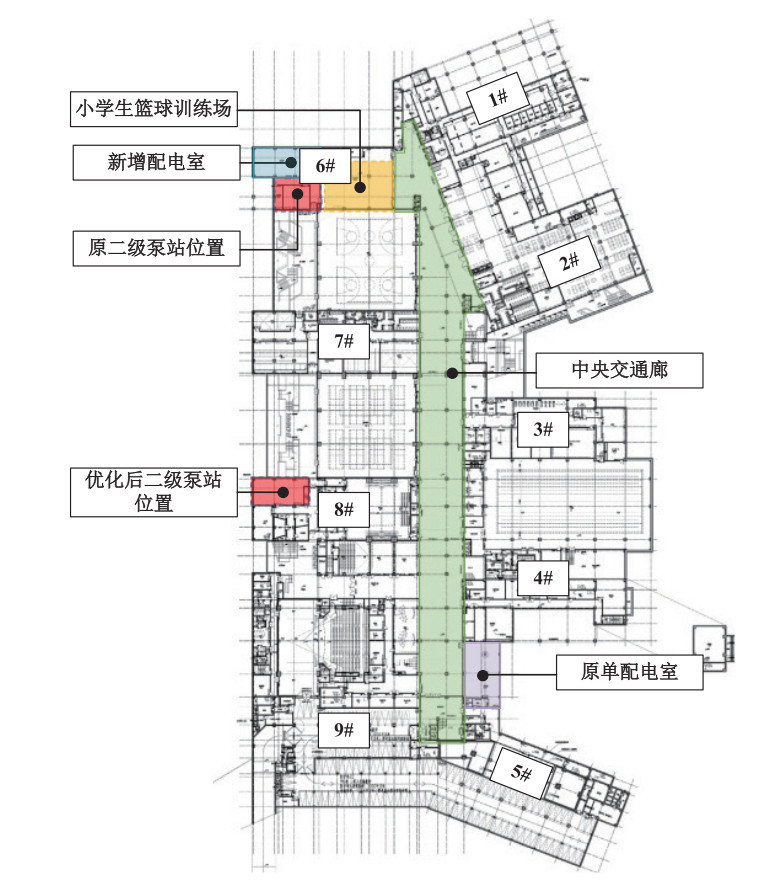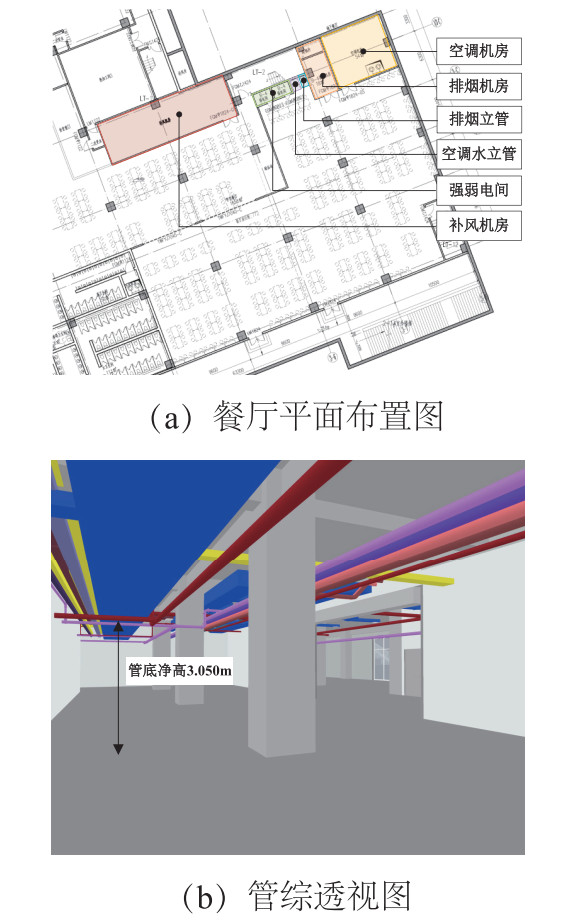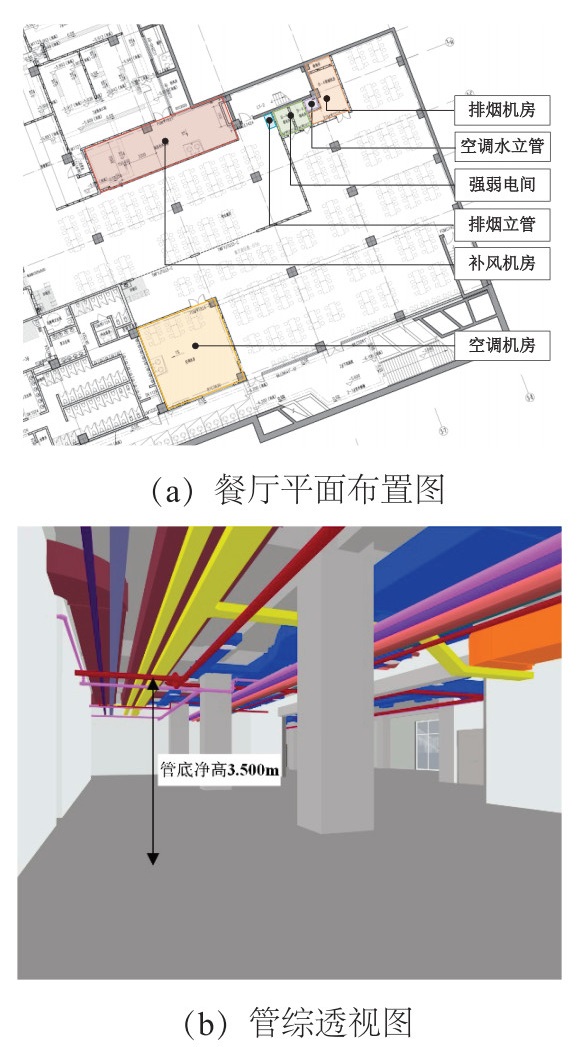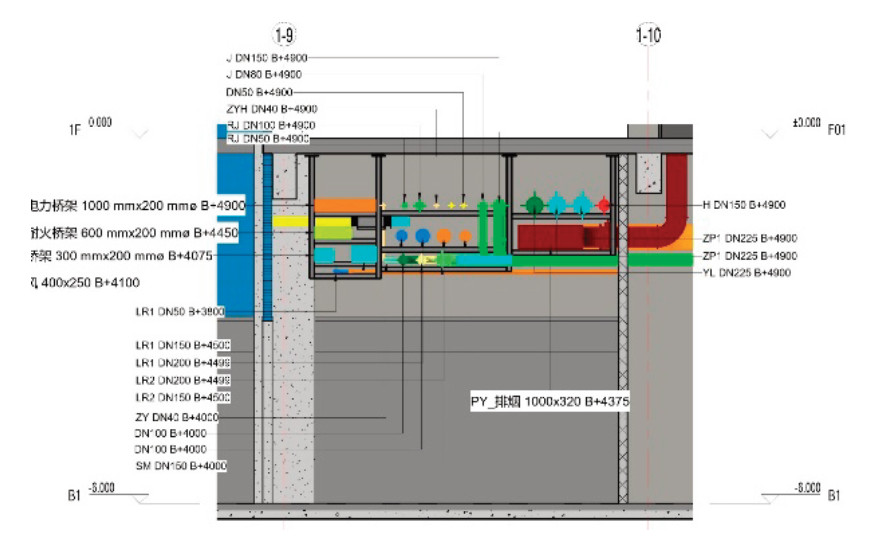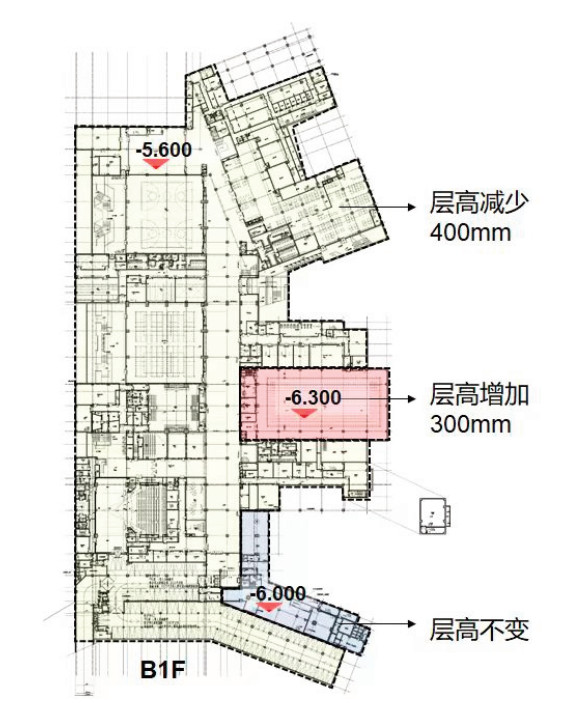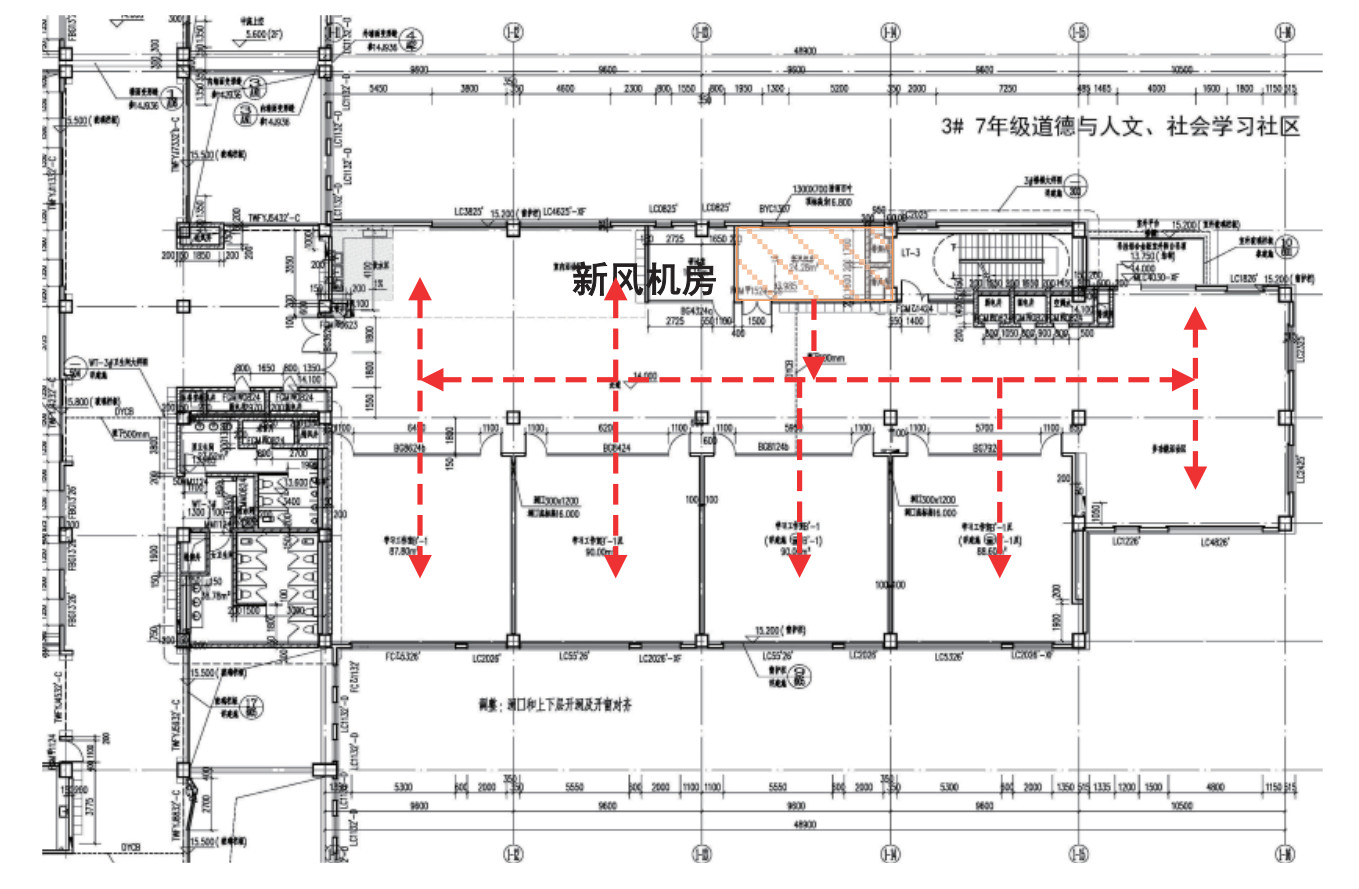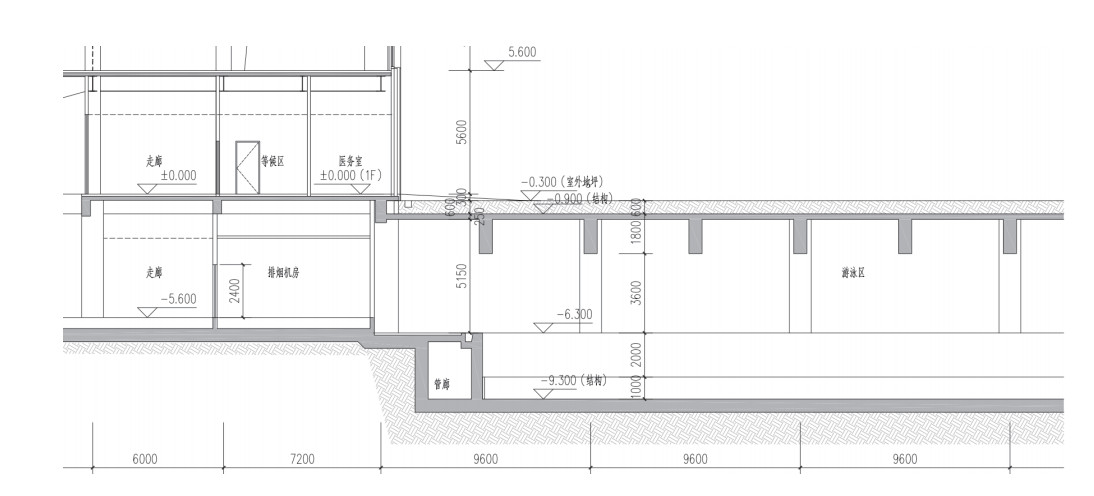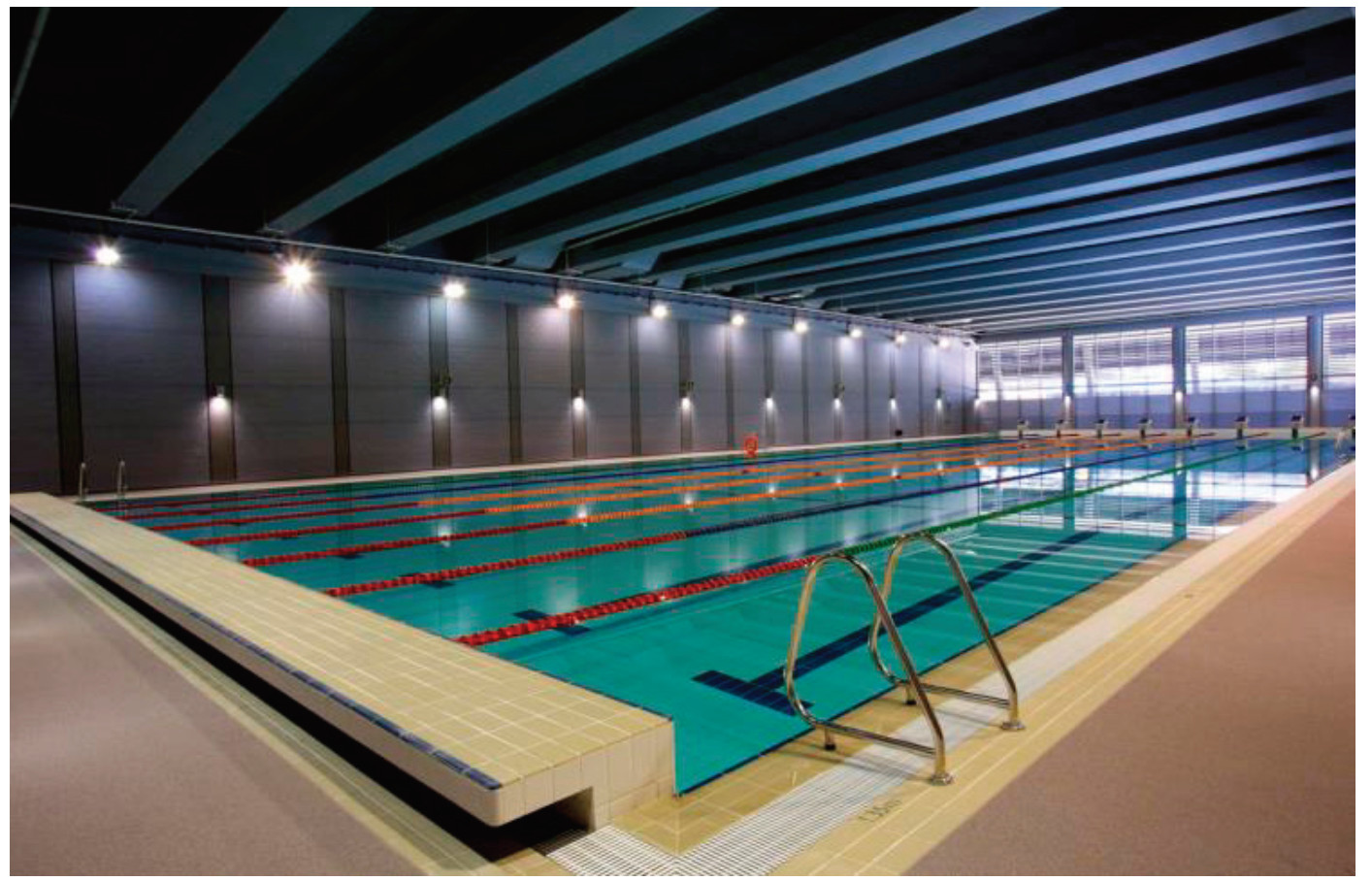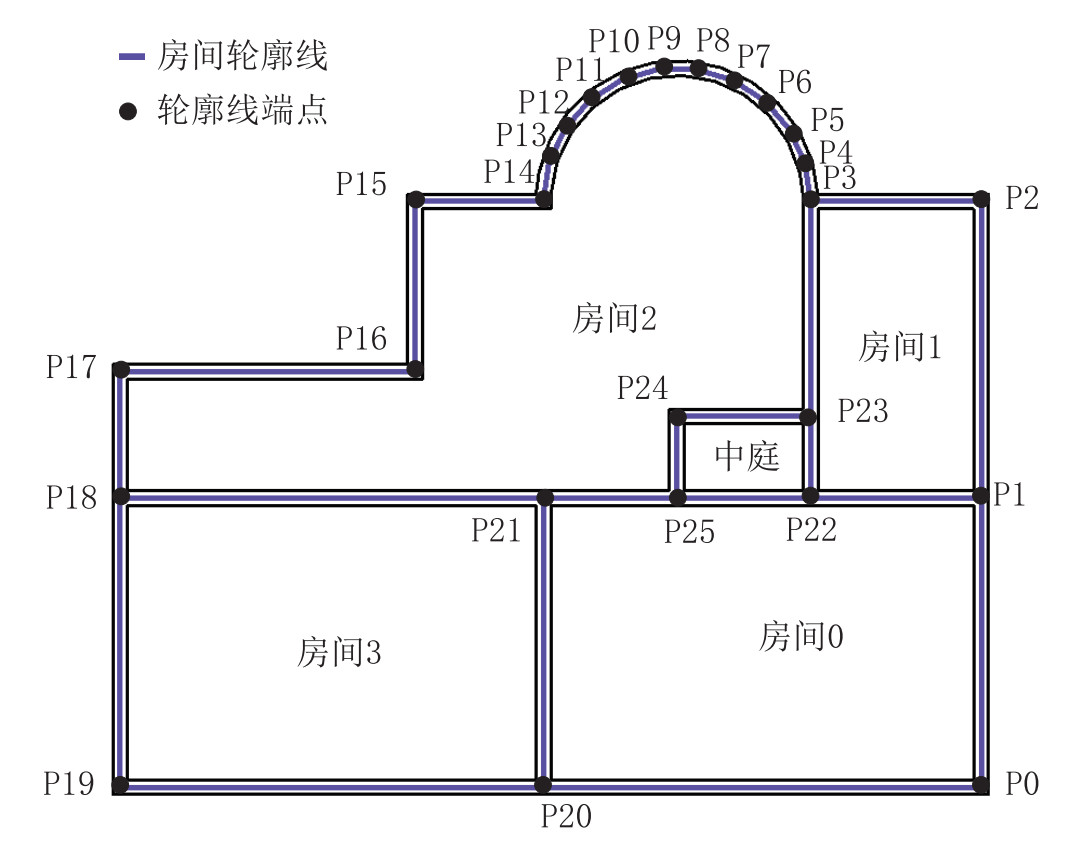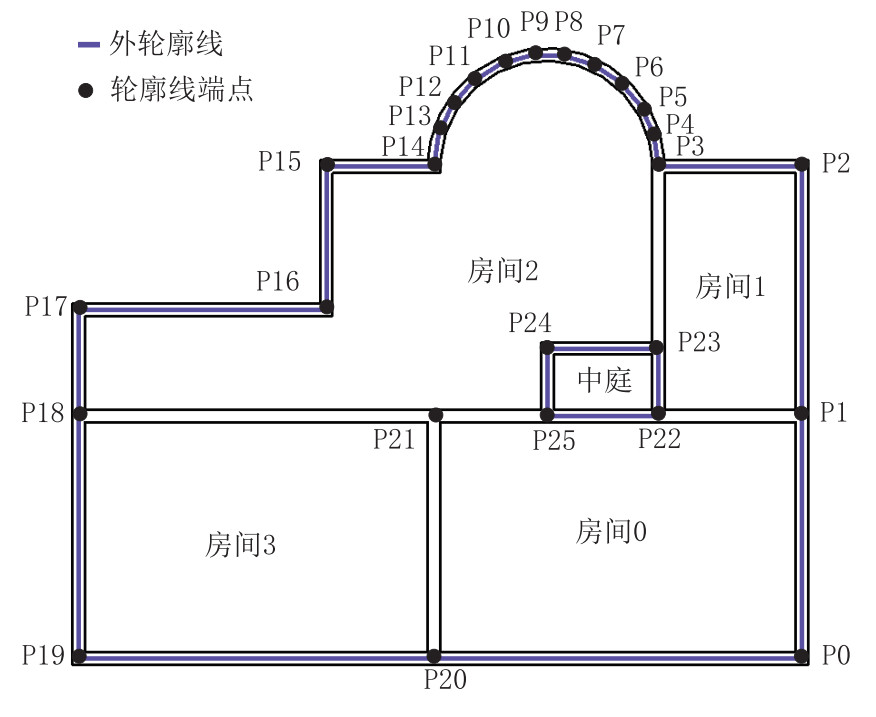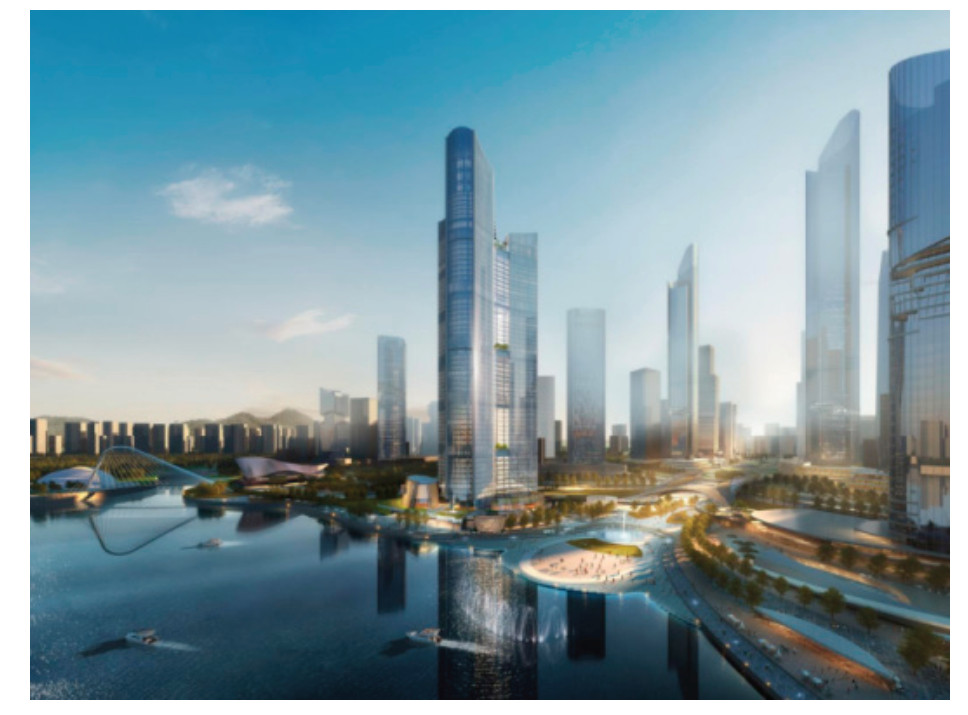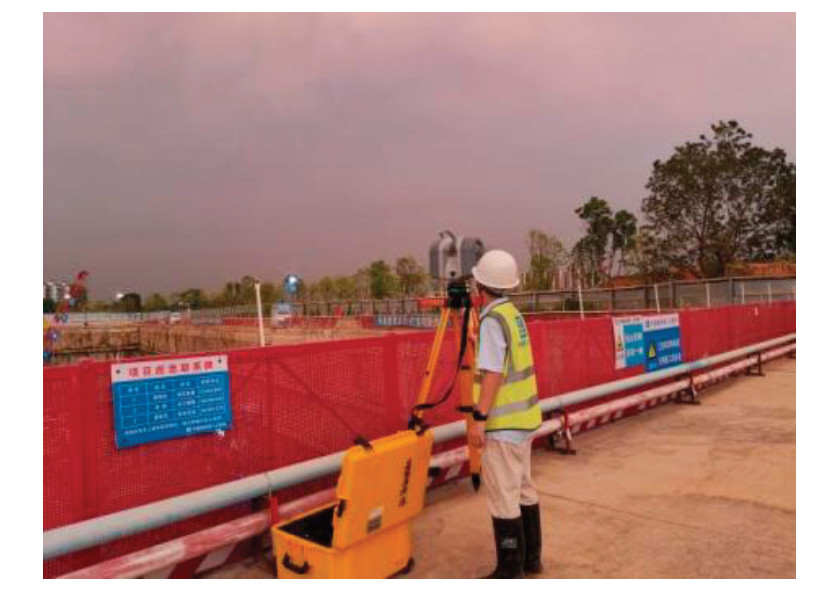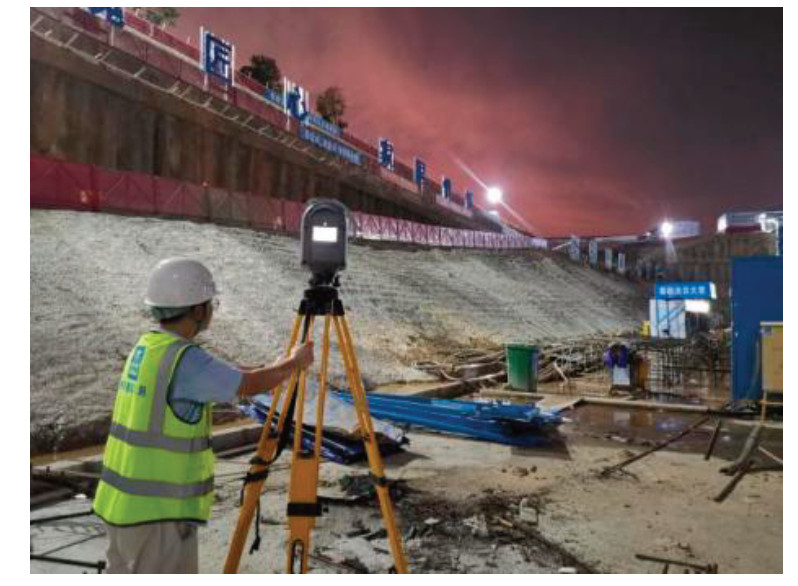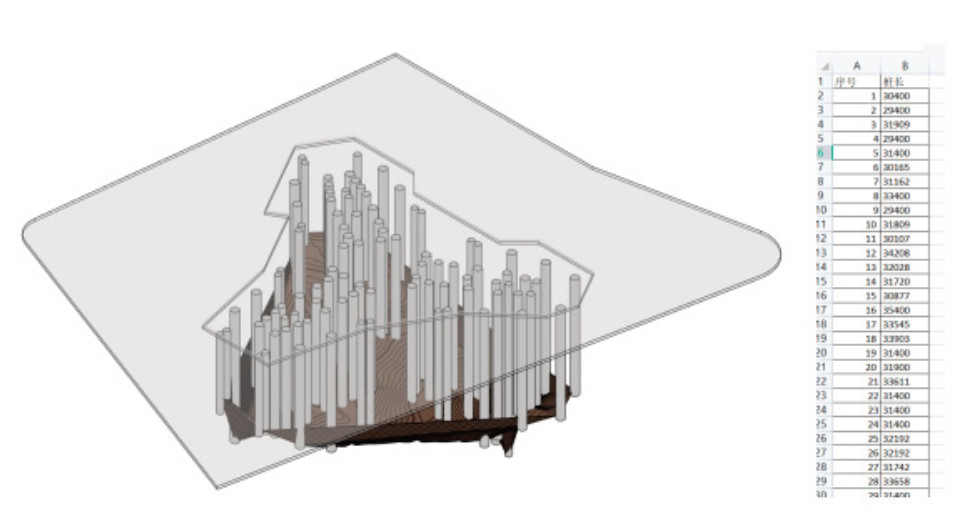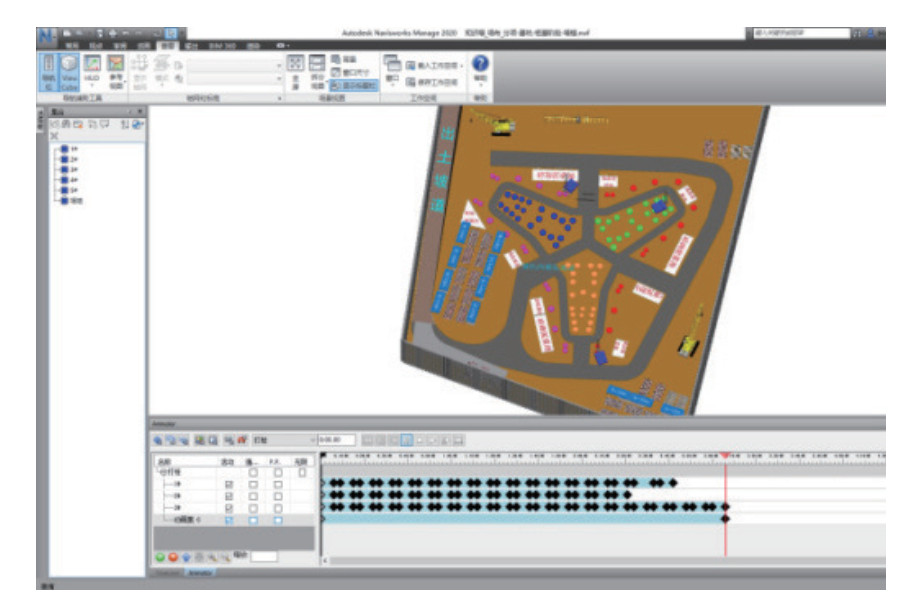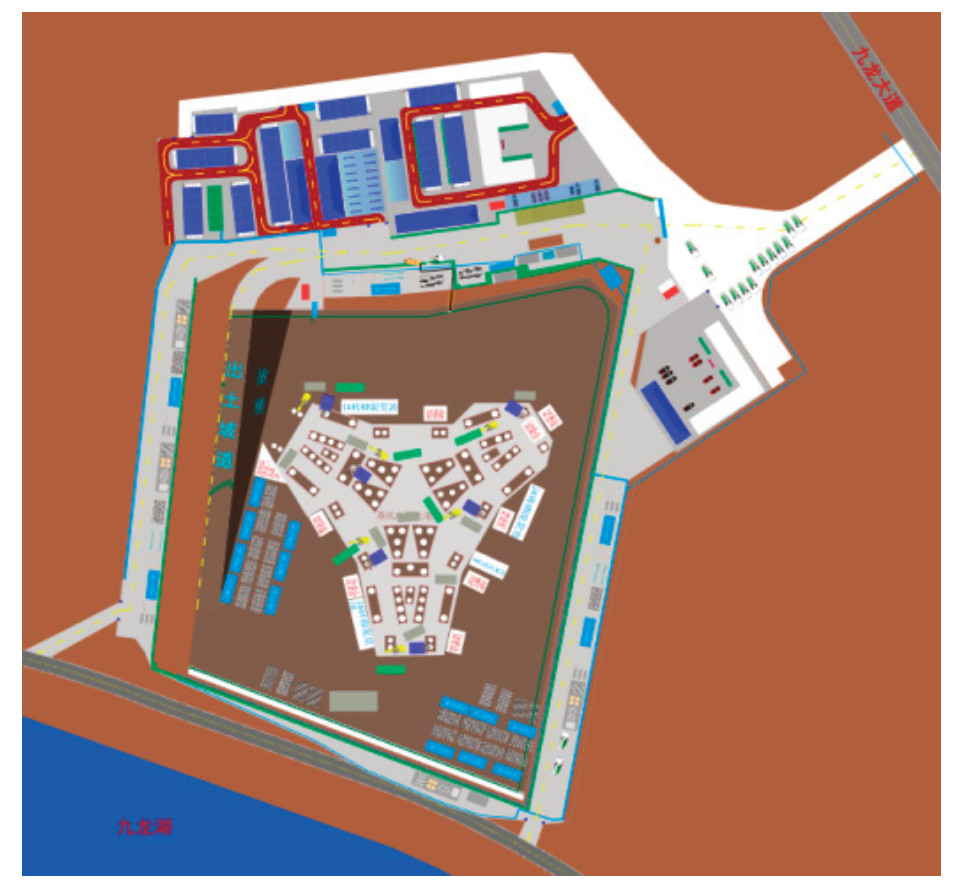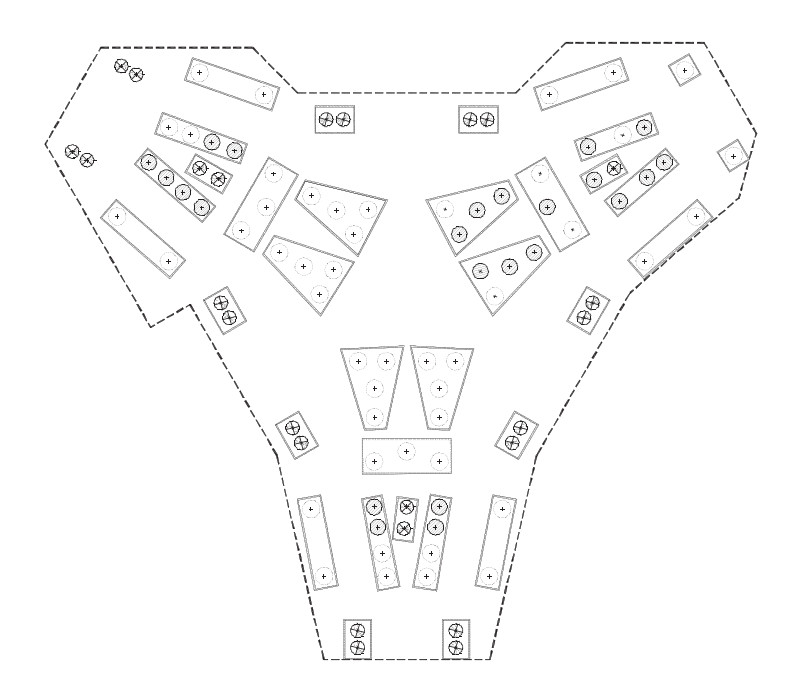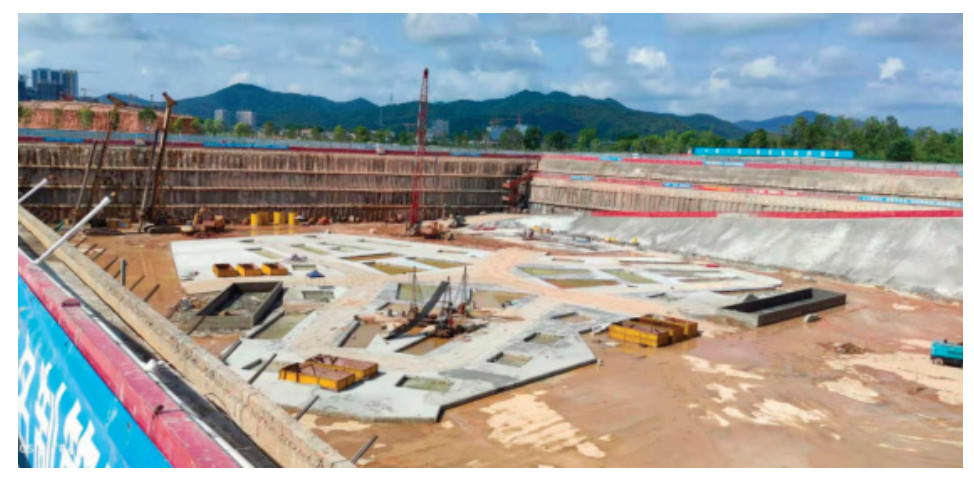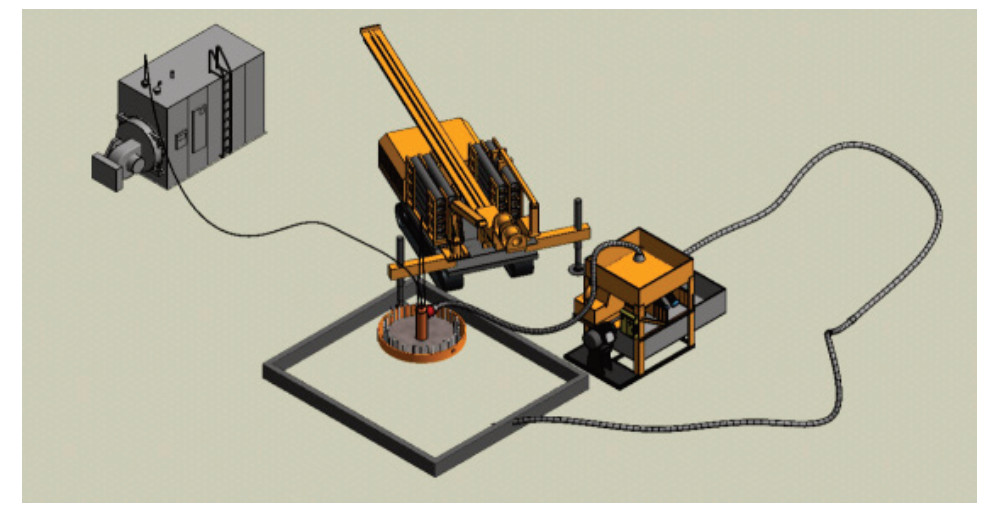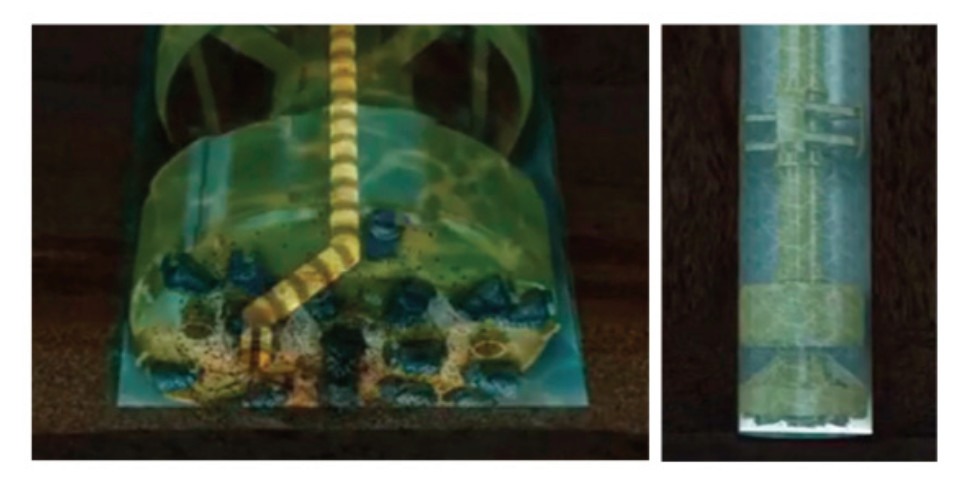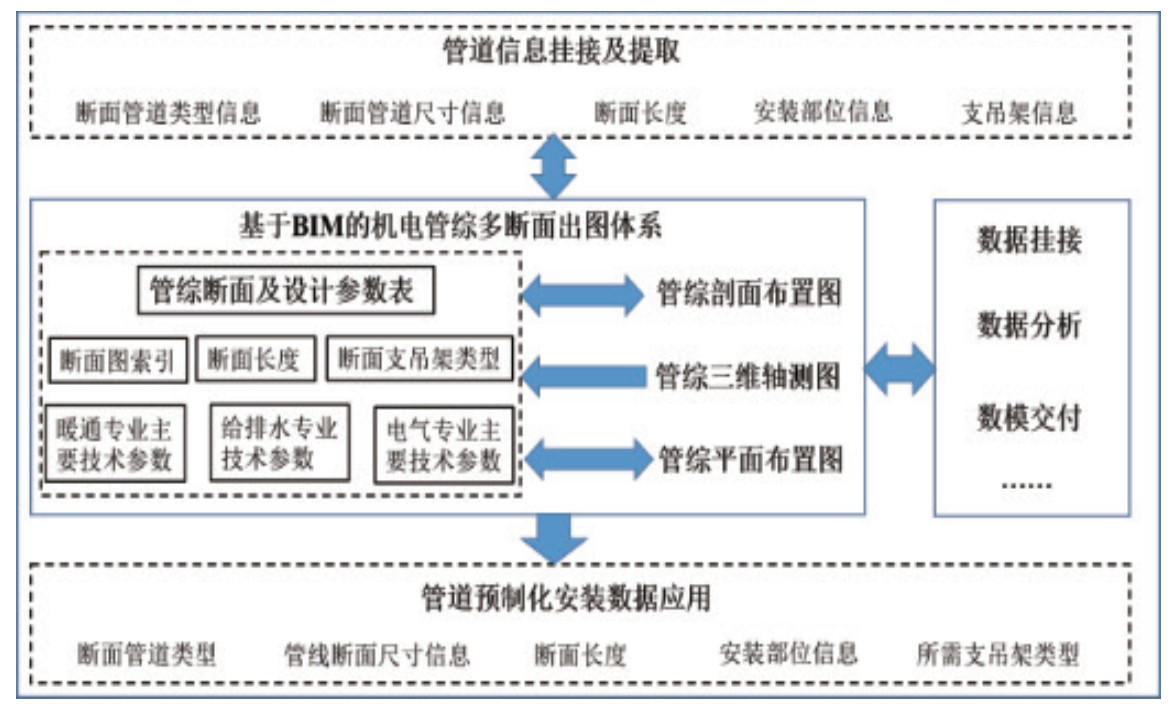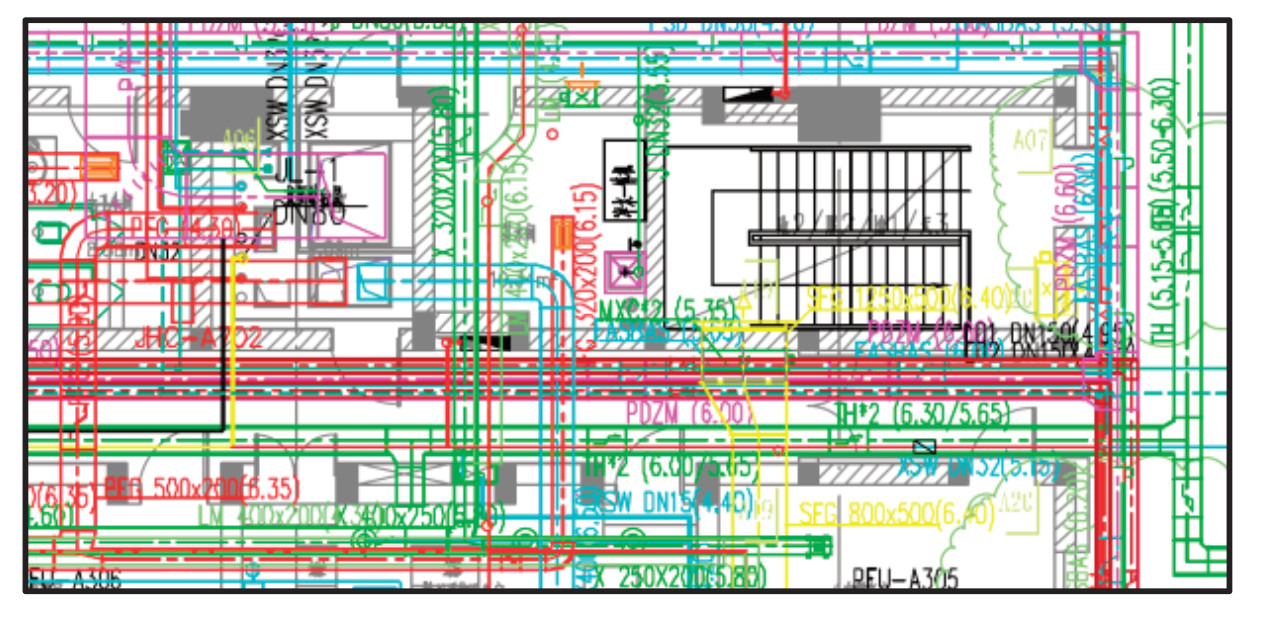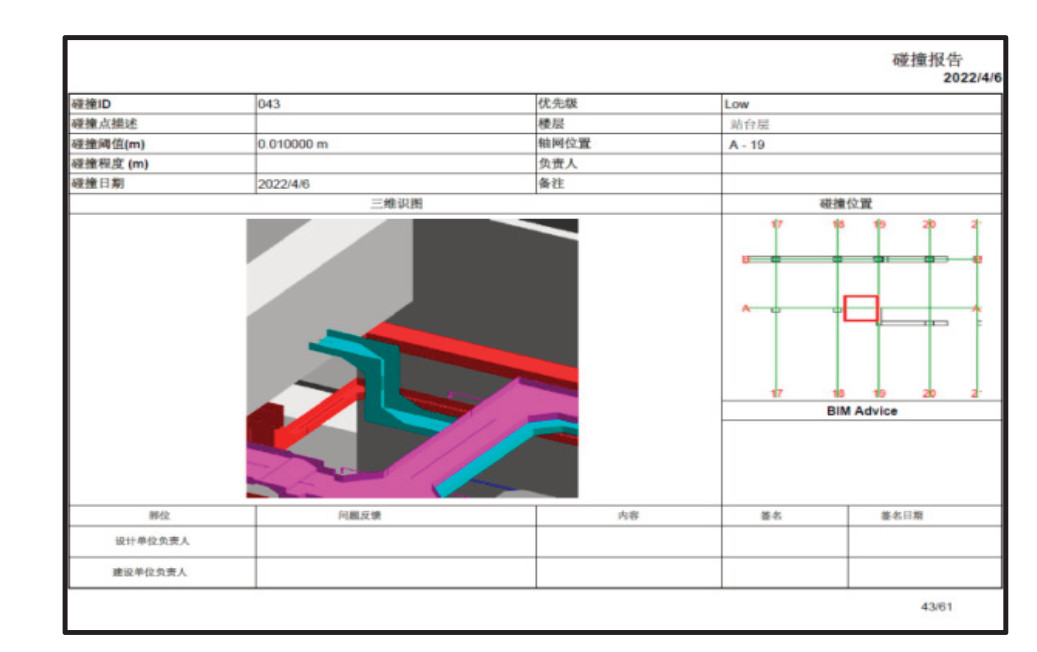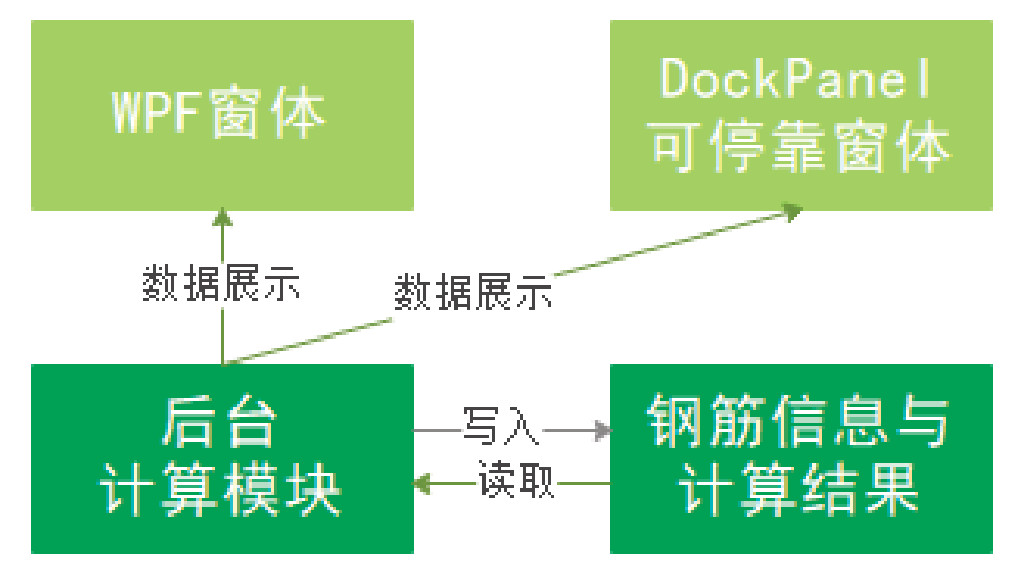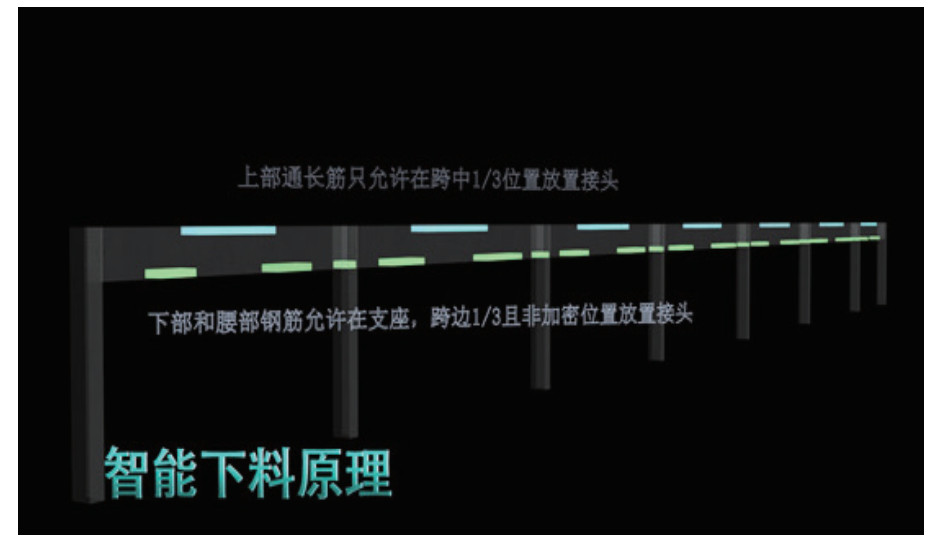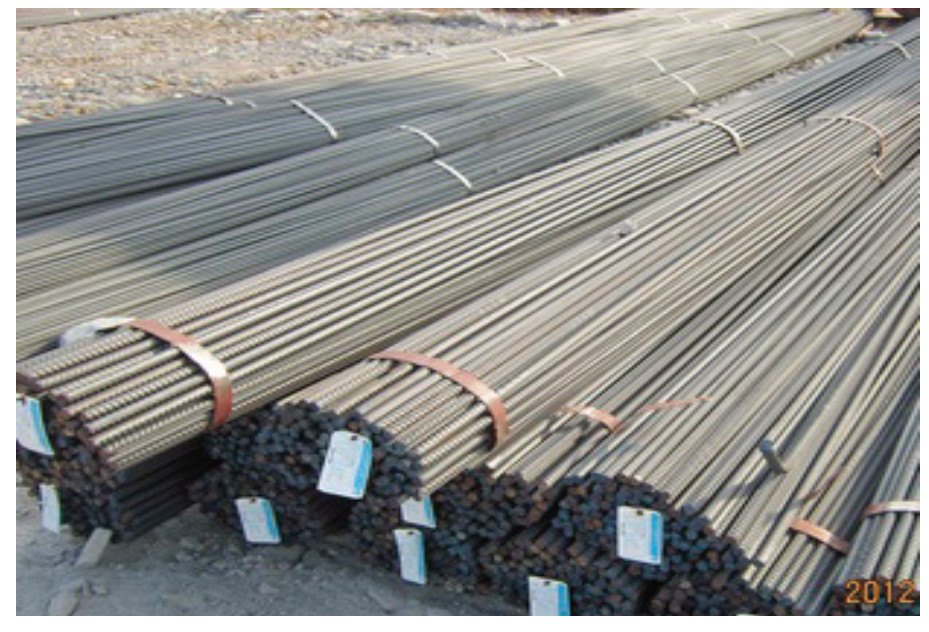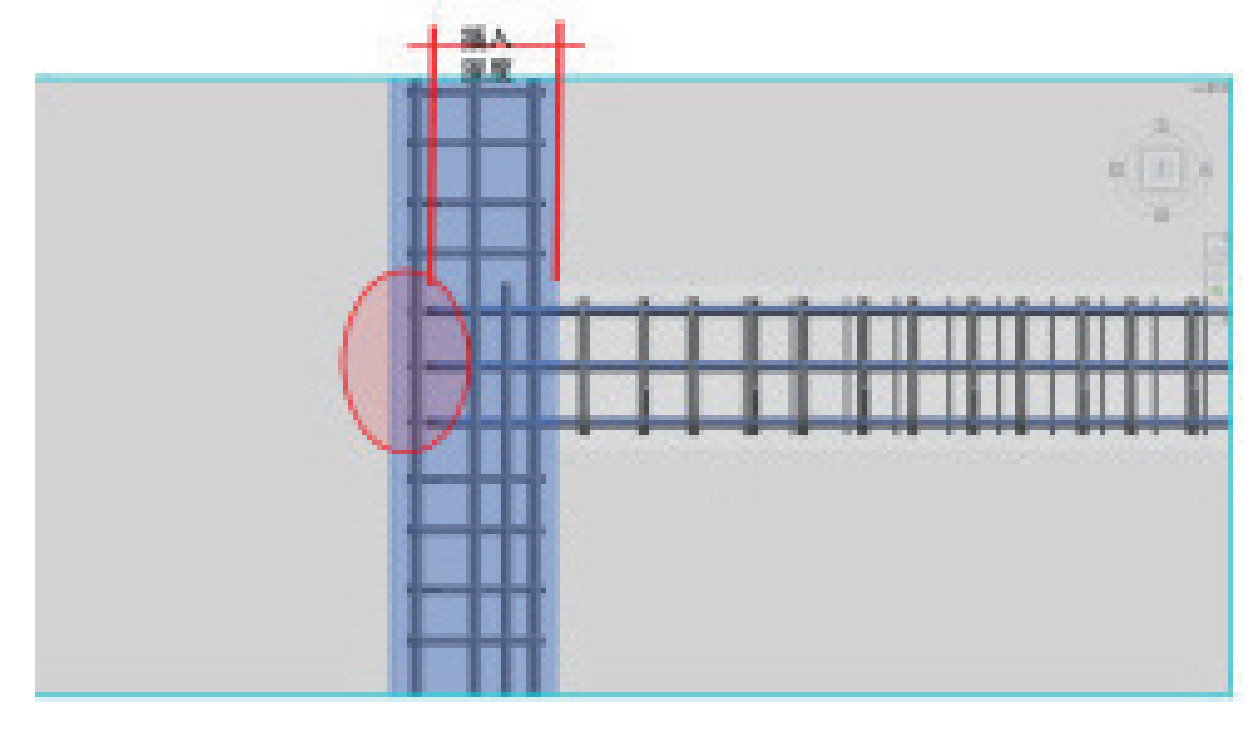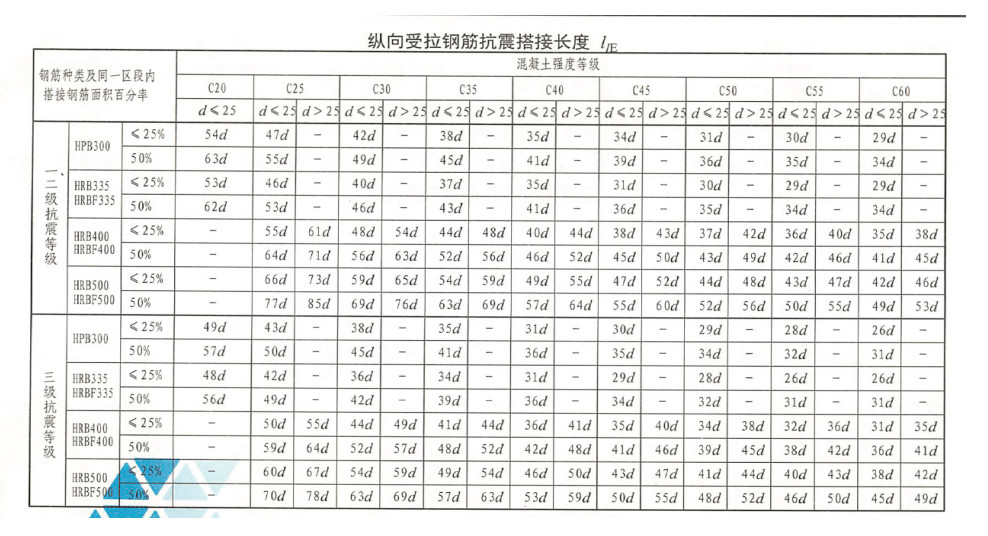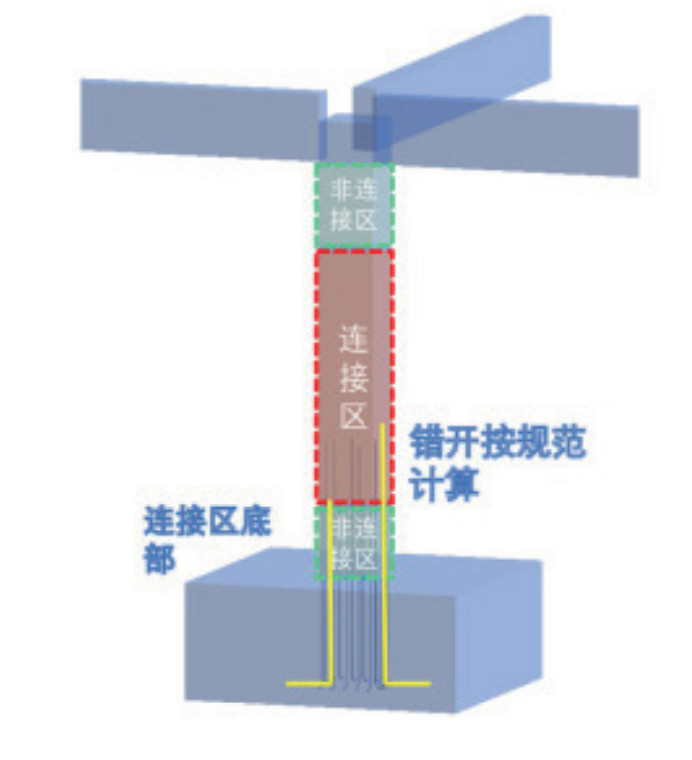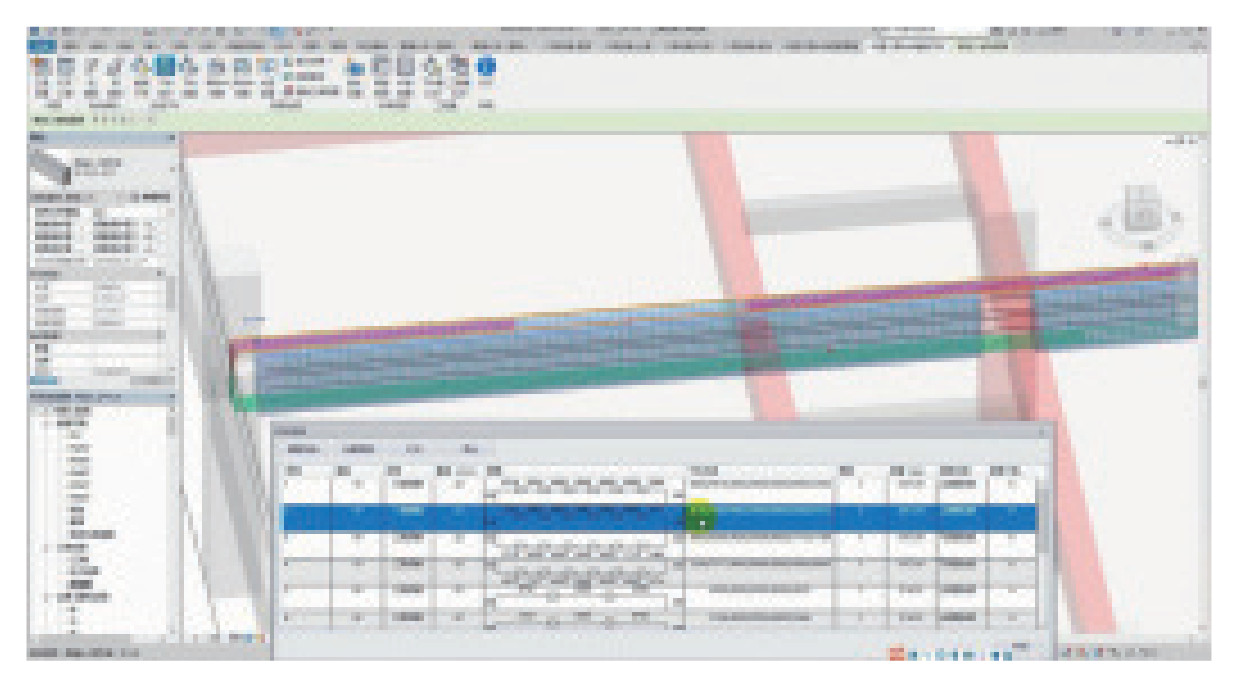Vol. 15, No 2, 2023
Display mode : |
2023, 15(2): -4--4.
Abstract:
2023, 15(2): 1-5.
doi: 10.16670/j.cnki.cn11-5823/tu.2023.02.01
Abstract:
The investigation on the pathway of urban information model is a key to exploring urban governance. This article, taking the construction of Suzhou CIM platform as a case study, discusses the city life cycle, ranging from planning, construction, management to operation, relating to the techniques of BIM, GIS and IoT from the aspects of spatial value-added practice and digital platform practice. Then it further constructs a new path of Suzhou's digital transformation from perception to analysis and intelligent application, and looks forward to the future of urban digitalization.
The investigation on the pathway of urban information model is a key to exploring urban governance. This article, taking the construction of Suzhou CIM platform as a case study, discusses the city life cycle, ranging from planning, construction, management to operation, relating to the techniques of BIM, GIS and IoT from the aspects of spatial value-added practice and digital platform practice. Then it further constructs a new path of Suzhou's digital transformation from perception to analysis and intelligent application, and looks forward to the future of urban digitalization.
2023, 15(2): 6-11.
doi: 10.16670/j.cnki.cn11-5823/tu.2023.02.02
Abstract:
With the rapid development of economy, demands for bridge landscape are becoming increasingly urgent in China, hence bridges with complex spatial structures and beautiful curves come into being. However, the traditional BIM modeling methods for creating bridges with unique shapes are complicated and its efficiency is low. Therefore, the design and modeling process of bridge landscape with unique shapes has always been a pressing issue. By combining the Revit software with the visual programming plug-in Dynamo, a parametric family library of the pedestrian cable-stayed bridge was created, and the rapid modeling technology related to the pedestrian cable-stayed bridge was developed according to the characteristics of each structural bridge of a special-shaped pedestrian cable-stayed bridge. This method achieves the rapid layout and parameter assignment of each component of the spatially shaped bridge by obtaining the three-dimensional coordinate points of the bridge centerline, compiling the bridge component parameterized Excel table and the Dynamo program to import the parameter information and position information of each component in the Excel table. Based on the mode "Revit+Dynamo", the modeling efficiency of pedestrian cable-stayed bridges can be greatly improved, which promotes the implementation of BIM technology in complex landscape bridges, and provides new ideas for the modeling of complex human-shaped cable-stayed bridges.
With the rapid development of economy, demands for bridge landscape are becoming increasingly urgent in China, hence bridges with complex spatial structures and beautiful curves come into being. However, the traditional BIM modeling methods for creating bridges with unique shapes are complicated and its efficiency is low. Therefore, the design and modeling process of bridge landscape with unique shapes has always been a pressing issue. By combining the Revit software with the visual programming plug-in Dynamo, a parametric family library of the pedestrian cable-stayed bridge was created, and the rapid modeling technology related to the pedestrian cable-stayed bridge was developed according to the characteristics of each structural bridge of a special-shaped pedestrian cable-stayed bridge. This method achieves the rapid layout and parameter assignment of each component of the spatially shaped bridge by obtaining the three-dimensional coordinate points of the bridge centerline, compiling the bridge component parameterized Excel table and the Dynamo program to import the parameter information and position information of each component in the Excel table. Based on the mode "Revit+Dynamo", the modeling efficiency of pedestrian cable-stayed bridges can be greatly improved, which promotes the implementation of BIM technology in complex landscape bridges, and provides new ideas for the modeling of complex human-shaped cable-stayed bridges.
2023, 15(2): 12-17.
doi: 10.16670/j.cnki.cn11-5823/tu.2023.02.03
Abstract:
Based on the 500kV Chongwen-Zijing transmission line project, this paper discusses the technical approaches of 3D panoramic visualization of Extrahigh-Voltage (EHV) transmission line project. These approaches include the following: Firstly, the geomorphologic model of transmission line project is generated by using satellite image data and high-precision digital elevation data (DEM). Secondly, the slope photography technology is used to model the real scene of important buildings and ground objects in sensitive areas. Thirdly, BIM Technology is used to model transmission tower and transmission line. Finally, the SuperMap 3D Designer engine is used to fuse the geomorphologic model, the slop photography model and BIM model. In this way, three-dimensional panoramic display from different angles can be realized, such as provincial and municipal perspective, village and town perspective, tower perspective, etc. The research results show that the three-dimensional modeling technology based on the integration of GIS, slope photography, BIM model and three-dimensional engine technology can comprehensively display the landform of EHV transmission line project, truly reflect the crossing situation, and provide support for the fine management of EHV transmission line project.
Based on the 500kV Chongwen-Zijing transmission line project, this paper discusses the technical approaches of 3D panoramic visualization of Extrahigh-Voltage (EHV) transmission line project. These approaches include the following: Firstly, the geomorphologic model of transmission line project is generated by using satellite image data and high-precision digital elevation data (DEM). Secondly, the slope photography technology is used to model the real scene of important buildings and ground objects in sensitive areas. Thirdly, BIM Technology is used to model transmission tower and transmission line. Finally, the SuperMap 3D Designer engine is used to fuse the geomorphologic model, the slop photography model and BIM model. In this way, three-dimensional panoramic display from different angles can be realized, such as provincial and municipal perspective, village and town perspective, tower perspective, etc. The research results show that the three-dimensional modeling technology based on the integration of GIS, slope photography, BIM model and three-dimensional engine technology can comprehensively display the landform of EHV transmission line project, truly reflect the crossing situation, and provide support for the fine management of EHV transmission line project.
2023, 15(2): 18-23.
doi: 10.16670/j.cnki.cn11-5823/tu.2023.02.04
Abstract:
The placement of garbage in rural areas usually does not take into account the orientation of buildings and lack of quantification of its impact, etc. Based on the oblique photography model in rural areas and the characteristics of rural buildings, this paper proposed an optimization method for the placement of rural garbage by improving multi-objective simulated annealing algorithm. According to the proposing principles for determining initial candidate locations for garbage based on a priori geographic information data, this study presented new solutions. Firstly, the method of calculating the garbage disposal distance and the garbage influence distance based on the oblique photography model was designed. Secondly, a multi-objective optimization model for garbage placements in rural areas was constructed by introducing the house orientation factor. Thirdly, the study proposed a new neighborhood strategy, which was easier to jump out of the local optimum than the traditional MOSA algorithm. This method reduced the complexity of location selection for a large number of garbage can placements by optimizing the initial candidate positions; the optimal solution balances the influence factors, such as the distance and the influence range of garbage. The effectiveness of the method was verified in the site selection - a garbage placement point in a village in southeast coast. The comparative analysis with other algorithms proves that the proposed method has higher operating efficiency and more reasonable location selection results.
The placement of garbage in rural areas usually does not take into account the orientation of buildings and lack of quantification of its impact, etc. Based on the oblique photography model in rural areas and the characteristics of rural buildings, this paper proposed an optimization method for the placement of rural garbage by improving multi-objective simulated annealing algorithm. According to the proposing principles for determining initial candidate locations for garbage based on a priori geographic information data, this study presented new solutions. Firstly, the method of calculating the garbage disposal distance and the garbage influence distance based on the oblique photography model was designed. Secondly, a multi-objective optimization model for garbage placements in rural areas was constructed by introducing the house orientation factor. Thirdly, the study proposed a new neighborhood strategy, which was easier to jump out of the local optimum than the traditional MOSA algorithm. This method reduced the complexity of location selection for a large number of garbage can placements by optimizing the initial candidate positions; the optimal solution balances the influence factors, such as the distance and the influence range of garbage. The effectiveness of the method was verified in the site selection - a garbage placement point in a village in southeast coast. The comparative analysis with other algorithms proves that the proposed method has higher operating efficiency and more reasonable location selection results.
2023, 15(2): 24-30.
doi: 10.16670/j.cnki.cn11-5823/tu.2023.02.05
Abstract:
The construction of city information model (CIM) needs to settle transformation of various data in a unified coordinate system. By sorting out the commonly used coordinate systems, this paper analyzes the conversion principles between different coordinate systems, introduces the application cases of the BIM model conversion process under the CGCS2000 projected coordinate system and the Nanjing local projected coordinate system, and finally proposes a set of integration solution from BIM model to CIM platform under heterogeneous coordinate systems.
The construction of city information model (CIM) needs to settle transformation of various data in a unified coordinate system. By sorting out the commonly used coordinate systems, this paper analyzes the conversion principles between different coordinate systems, introduces the application cases of the BIM model conversion process under the CGCS2000 projected coordinate system and the Nanjing local projected coordinate system, and finally proposes a set of integration solution from BIM model to CIM platform under heterogeneous coordinate systems.
2023, 15(2): 31-36.
doi: 10.16670/j.cnki.cn11-5823/tu.2023.02.06
Abstract:
It is difficult to implement BIM technology in project cost management due to the importance of project engineering calculation information in construction projects and the dependence of computer hardware in traditional BIM software. In this paper, the deduction relationship among concrete member column, beam, and slab is revised by Dynamo. The revised model is lightened by using Revit secondary development, then exporting glTF light format, structural tree file controlling the aggregation relationship of members, and the list quantity of work in accordance with China's pricing specification. Finally, based on Three.js graphics engine, the BIM lightweight platform is built by HTML, CSS and JavaScript to achieve the fast loading of BIM models on the website. By using component UniqueID, the paper succeeds in the matching model components with list quantity information and achieves online statistics of quantity information on the web platform. Finally, the BIM model case is imported to verify that the actual effect of this study meets the requirements.
It is difficult to implement BIM technology in project cost management due to the importance of project engineering calculation information in construction projects and the dependence of computer hardware in traditional BIM software. In this paper, the deduction relationship among concrete member column, beam, and slab is revised by Dynamo. The revised model is lightened by using Revit secondary development, then exporting glTF light format, structural tree file controlling the aggregation relationship of members, and the list quantity of work in accordance with China's pricing specification. Finally, based on Three.js graphics engine, the BIM lightweight platform is built by HTML, CSS and JavaScript to achieve the fast loading of BIM models on the website. By using component UniqueID, the paper succeeds in the matching model components with list quantity information and achieves online statistics of quantity information on the web platform. Finally, the BIM model case is imported to verify that the actual effect of this study meets the requirements.
2023, 15(2): 37-43.
doi: 10.16670/j.cnki.cn11-5823/tu.2023.02.07
Abstract:
In recent years, China's highway engineering construction has developed rapidly and it has entered into the stage for finer planning. The construction environment and geological conditions of engineering in mountainous areas are complex, which increases the difficulty and requirements of construction progress management and requires the introduction of new technical means to assist management. Using BIM parametric modeling and realistic modeling techniques, the study proposes a method to construct a digital twin model of highways in mountainous areas and designs a data collection and mapping scheme on the basis of Bluetooth technology, GPS technology and ZigBee technology. Relying on the above work, this study constructs a progress derivation model based on the digital twin. The digital twin of construction site can be used to deduce the construction progress and to realize the progress management decision based on real-time data, and it can also contribute to the facility management of highways in mountainous areas.
In recent years, China's highway engineering construction has developed rapidly and it has entered into the stage for finer planning. The construction environment and geological conditions of engineering in mountainous areas are complex, which increases the difficulty and requirements of construction progress management and requires the introduction of new technical means to assist management. Using BIM parametric modeling and realistic modeling techniques, the study proposes a method to construct a digital twin model of highways in mountainous areas and designs a data collection and mapping scheme on the basis of Bluetooth technology, GPS technology and ZigBee technology. Relying on the above work, this study constructs a progress derivation model based on the digital twin. The digital twin of construction site can be used to deduce the construction progress and to realize the progress management decision based on real-time data, and it can also contribute to the facility management of highways in mountainous areas.
2023, 15(2): 44-48.
doi: 10.16670/j.cnki.cn11-5823/tu.2023.02.08
Abstract:
With the rapid economic development after China's reform and opening up, China has made great achievements in bridge construction, for instance, bridge construction technology, bridge structure, high-performance materials, information technology, standards and specifications, etc., which also indicates that bridge construction is moving forward in China. The continuous system bridge has the advantages of small mid-span bending moment and good seismic and torsional performance. Based on the Revit API technology, this paper applies the Visual Studio 2019 platform for secondary development through using the C# language. The geometric structure and physical information are obtained from the BIM model through interface development, and meshing is performed based on the Revit model to convert the BIM model into a finite element analysis model, by which the operation threshold of the pre-processing of finite element analysis is greatly reduced. Finally, the applicability and accuracy of parametric modeling and model conversion interface are verified by the engineering example of continuous rigid-frame bridge.
With the rapid economic development after China's reform and opening up, China has made great achievements in bridge construction, for instance, bridge construction technology, bridge structure, high-performance materials, information technology, standards and specifications, etc., which also indicates that bridge construction is moving forward in China. The continuous system bridge has the advantages of small mid-span bending moment and good seismic and torsional performance. Based on the Revit API technology, this paper applies the Visual Studio 2019 platform for secondary development through using the C# language. The geometric structure and physical information are obtained from the BIM model through interface development, and meshing is performed based on the Revit model to convert the BIM model into a finite element analysis model, by which the operation threshold of the pre-processing of finite element analysis is greatly reduced. Finally, the applicability and accuracy of parametric modeling and model conversion interface are verified by the engineering example of continuous rigid-frame bridge.
2023, 15(2): 49-54.
doi: 10.16670/j.cnki.cn11-5823/tu.2023.02.09
Abstract:
The establishment of intelligent high-speed railway architecture promotes the continuous and in-depth development of intelligent construction technology of railway engineering; meanwhile it puts forward higher requirements for reliability, real-time and comprehensiveness of data. 5G communication is characterized by high speed, low delay and wide connection, which can provide communication infrastructure support for intelligent railway construction. This paper analyzes the overall architecture and development trend of intelligent construction of railway engineering and puts forward the application requirements of 5G in intelligent construction of railway based on the characteristics of 5G communication technology through analysis. From the work above, this paper further proposes the construction scheme of intelligent subgrade site integrating 5G. The relevant results in the paper can provide reference for intelligent upgrading of railway and related engineering construction.
The establishment of intelligent high-speed railway architecture promotes the continuous and in-depth development of intelligent construction technology of railway engineering; meanwhile it puts forward higher requirements for reliability, real-time and comprehensiveness of data. 5G communication is characterized by high speed, low delay and wide connection, which can provide communication infrastructure support for intelligent railway construction. This paper analyzes the overall architecture and development trend of intelligent construction of railway engineering and puts forward the application requirements of 5G in intelligent construction of railway based on the characteristics of 5G communication technology through analysis. From the work above, this paper further proposes the construction scheme of intelligent subgrade site integrating 5G. The relevant results in the paper can provide reference for intelligent upgrading of railway and related engineering construction.
2023, 15(2): 55-61.
doi: 10.16670/j.cnki.cn11-5823/tu.2023.02.10
Abstract:
At present, the cost problem is the main concern that restricts the development of assembled prefabricated buildings. With the integration of design, procurement and construction, the EPC mode has the characteristics of informatization, integration and specialization, which provides a direction for the project management and cost control of prefabricated buildings. Considering the increasing needs of prefabricated buildings and solving its cost problem, this paper studies the cost influencing factors of prefabricated building components from the perspective of EPC and according to the characteristics of prefabricated concrete buildings. Through the basic theory, this paper obtains 14 representative influencing factors and establishes ISM model to analyze the relationship between cost factors and obtain the surface direct factors, intermediate dynamic factors and deep leading factors affecting the cost. In this paper, the method MICMAC is used to analyze the dependency and driving force of cost factors and get the inner relationship between the factors is obtained. Finally, targeted suggestions are made to the above issues to provide direction for promoting prefabricated buildings.
At present, the cost problem is the main concern that restricts the development of assembled prefabricated buildings. With the integration of design, procurement and construction, the EPC mode has the characteristics of informatization, integration and specialization, which provides a direction for the project management and cost control of prefabricated buildings. Considering the increasing needs of prefabricated buildings and solving its cost problem, this paper studies the cost influencing factors of prefabricated building components from the perspective of EPC and according to the characteristics of prefabricated concrete buildings. Through the basic theory, this paper obtains 14 representative influencing factors and establishes ISM model to analyze the relationship between cost factors and obtain the surface direct factors, intermediate dynamic factors and deep leading factors affecting the cost. In this paper, the method MICMAC is used to analyze the dependency and driving force of cost factors and get the inner relationship between the factors is obtained. Finally, targeted suggestions are made to the above issues to provide direction for promoting prefabricated buildings.
2023, 15(2): 62-67.
doi: 10.16670/j.cnki.cn11-5823/tu.2023.02.11
Abstract:
In the construction of urban subway, there are often various unknown obstacles in the ground, so these obstacles must be cleaned up timely and effectively before entering into the construction stage. In view of the great risk when the silty sand stratum is in the silty sand stratum adjacent to the operating subway station, this paper, based on the Yuantuan section of Wuhan Rail Transit Line 12, systematically introduces the related technologies of shaft excavation and freezing method to break the retaining structure of the station in the silty sand stratum adjacent to the operating subway station, summarizes the risks of freezing method to the operating subway station, and introduces the automatic monitoring methods and corresponding risk control measures adopted in this project. On this basis, combined with various monitoring data, the control effect of risk control measures in the construction of obstacle clearing by freezing method is summarized, which can provide a useful reference for similar projects.
In the construction of urban subway, there are often various unknown obstacles in the ground, so these obstacles must be cleaned up timely and effectively before entering into the construction stage. In view of the great risk when the silty sand stratum is in the silty sand stratum adjacent to the operating subway station, this paper, based on the Yuantuan section of Wuhan Rail Transit Line 12, systematically introduces the related technologies of shaft excavation and freezing method to break the retaining structure of the station in the silty sand stratum adjacent to the operating subway station, summarizes the risks of freezing method to the operating subway station, and introduces the automatic monitoring methods and corresponding risk control measures adopted in this project. On this basis, combined with various monitoring data, the control effect of risk control measures in the construction of obstacle clearing by freezing method is summarized, which can provide a useful reference for similar projects.
2023, 15(2): 68-73.
doi: 10.16670/j.cnki.cn11-5823/tu.2023.02.12
Abstract:
Taking Huaian Baima Lake Bridge as the object, this paper carries out the implementation of BIM technology in the construction of complex heterogeneous steel structure bridge. Meanwhile, BIM technology is deeply integrated with the deepening design, processing and manufacturing, and site construction of steel structure bridge in this paper. In the deepening design stage, 3D coordinate method and Tekla software are adopted to realize the rapid and accurate modeling of space special-shaped steel arch structure, and its efficient drawing is made based on CATIA software. In the processing and manufacturing stage, digital processing technology is used to cut parts, effectively reducing the number of field openings by about 57%; "one plate, one tire" technology with project characteristics is developed for controlling the manufacturing accuracy of curved plate within 2mm. In the site construction stage, this paper proposes optimizing the original construction scheme of "arch before beam", which saves 6.081 million CNY in installation and demolition costs. Constructing management system of Baima Lake project is established at this stage to achieve the real-time, dynamic and comprehensive control of project management and achieve the goal of fine management.
Taking Huaian Baima Lake Bridge as the object, this paper carries out the implementation of BIM technology in the construction of complex heterogeneous steel structure bridge. Meanwhile, BIM technology is deeply integrated with the deepening design, processing and manufacturing, and site construction of steel structure bridge in this paper. In the deepening design stage, 3D coordinate method and Tekla software are adopted to realize the rapid and accurate modeling of space special-shaped steel arch structure, and its efficient drawing is made based on CATIA software. In the processing and manufacturing stage, digital processing technology is used to cut parts, effectively reducing the number of field openings by about 57%; "one plate, one tire" technology with project characteristics is developed for controlling the manufacturing accuracy of curved plate within 2mm. In the site construction stage, this paper proposes optimizing the original construction scheme of "arch before beam", which saves 6.081 million CNY in installation and demolition costs. Constructing management system of Baima Lake project is established at this stage to achieve the real-time, dynamic and comprehensive control of project management and achieve the goal of fine management.
2023, 15(2): 74-77.
doi: 10.16670/j.cnki.cn11-5823/tu.2023.02.13
Abstract:
Xiongan Pavilion in Xiongan Country Park is a special-shaped building integrating exhibition, catering and accommodation. The interior decoration is fine and beautiful, and the building's shape is peculiar. However, it is difficult to model for its special-shaped decoration components through BIM technology. In this paper, parametric modeling tools are used to model different special-shaped components; Revit software and Dynamo plug-in are applied to achieve the modeling of mushroom-shaped decorative columns; Grasshopper plug-in is employed to achieve the modeling of special-shaped dome and hexagonal ceiling, which greatly improves the efficiency of modeling. From the work above, this paper can provide references for other complex decoration engineering modeling.
Xiongan Pavilion in Xiongan Country Park is a special-shaped building integrating exhibition, catering and accommodation. The interior decoration is fine and beautiful, and the building's shape is peculiar. However, it is difficult to model for its special-shaped decoration components through BIM technology. In this paper, parametric modeling tools are used to model different special-shaped components; Revit software and Dynamo plug-in are applied to achieve the modeling of mushroom-shaped decorative columns; Grasshopper plug-in is employed to achieve the modeling of special-shaped dome and hexagonal ceiling, which greatly improves the efficiency of modeling. From the work above, this paper can provide references for other complex decoration engineering modeling.
2023, 15(2): 78-82.
doi: 10.16670/j.cnki.cn11-5823/tu.2023.02.14
Abstract:
BIM technology is frequently applied in construction projects nowadays, and its value of application has been widely recognized, especially in the investment control and design optimization of projects. Based on engineering practice, this paper conducts quantitative and qualitative analysis from the perspective of each participant in the project. From owners' views, this paper attempts to make a quantitative analysis about the profits of investment control and design optimization of projects using BIM, and make a qualitative assessment of their risk management, decision-making auxiliary, market competition and owners' satisfaction. This study evaluates the value brought by BIM technology application objectively and compensate its deficiency of benefit quantitative analysis and evaluation, which provides a reference for owners to adopt BIM technology to improve the overall level of project management.
BIM technology is frequently applied in construction projects nowadays, and its value of application has been widely recognized, especially in the investment control and design optimization of projects. Based on engineering practice, this paper conducts quantitative and qualitative analysis from the perspective of each participant in the project. From owners' views, this paper attempts to make a quantitative analysis about the profits of investment control and design optimization of projects using BIM, and make a qualitative assessment of their risk management, decision-making auxiliary, market competition and owners' satisfaction. This study evaluates the value brought by BIM technology application objectively and compensate its deficiency of benefit quantitative analysis and evaluation, which provides a reference for owners to adopt BIM technology to improve the overall level of project management.
2023, 15(2): 83-86.
doi: 10.16670/j.cnki.cn11-5823/tu.2023.02.15
Abstract:
Following the new trend of technological and industrial innovations in which internet technologies are increasingly incorporated, "digital technology" and "digital economy" has become essential to economical and social development. Being indispensable for digitalization of the construction industry, the BIM technology has long been relying on software with American and European origins, which undermines the development of large-scale project modelling and data management. In light of the situation, an autonomous and controllable BIM technology was developed based on the BIMBase platform in this paper. By building BIM database using self-developed graphics, data management and rendering engines, the issues involving the efficiency of modelling, data management and display are addressed. The efforts above boosts the innovation of Chinese engineering and software companies.
Following the new trend of technological and industrial innovations in which internet technologies are increasingly incorporated, "digital technology" and "digital economy" has become essential to economical and social development. Being indispensable for digitalization of the construction industry, the BIM technology has long been relying on software with American and European origins, which undermines the development of large-scale project modelling and data management. In light of the situation, an autonomous and controllable BIM technology was developed based on the BIMBase platform in this paper. By building BIM database using self-developed graphics, data management and rendering engines, the issues involving the efficiency of modelling, data management and display are addressed. The efforts above boosts the innovation of Chinese engineering and software companies.
2023, 15(2): 87-91.
doi: 10.16670/j.cnki.cn11-5823/tu.2023.02.16
Abstract:
There are a number of problems in the intelligent recognition of substation civil construction site, for instance, complexity of construction scene, difficulty of target recognition and segmentation, and asymmetry of information, etc. To solve the problems above, this paper proposes an intelligent scene recognition and analysis technology based on the graph attention mechanism and super-resolution network model, which uses the graph volume spirit network and attention mechanism network to extract the deep-seated features of target images. Through the pixel super-resolution technology combined with bilinear interpolation and deconvolution, it is feasible to obtain clear the object boundary in images and realize the instance segmentation of civil engineering scene. The results in the paper show that the graph attention mechanism and super-resolution network model effectively solves the problems of insufficient target boundary information and poor case segmentation accuracy in aerial images. What's more, it can accurately segment the target in substation scene, and the edge boundary of target is clear.
There are a number of problems in the intelligent recognition of substation civil construction site, for instance, complexity of construction scene, difficulty of target recognition and segmentation, and asymmetry of information, etc. To solve the problems above, this paper proposes an intelligent scene recognition and analysis technology based on the graph attention mechanism and super-resolution network model, which uses the graph volume spirit network and attention mechanism network to extract the deep-seated features of target images. Through the pixel super-resolution technology combined with bilinear interpolation and deconvolution, it is feasible to obtain clear the object boundary in images and realize the instance segmentation of civil engineering scene. The results in the paper show that the graph attention mechanism and super-resolution network model effectively solves the problems of insufficient target boundary information and poor case segmentation accuracy in aerial images. What's more, it can accurately segment the target in substation scene, and the edge boundary of target is clear.
2023, 15(2): 92-97.
doi: 10.16670/j.cnki.cn11-5823/tu.2023.02.17
Abstract:
Based on the Beijing No.1 Experimental School, this paper studies the application strategy for BIM during the initial design phase of public building. Moreover, the paper explores how to verify the periodical design result of architecture, structure, and mechatronic, etc., with BIM modeling and how to establish balance between the architectural effects and economy. From the work above, this paper could assistant effectively decision-making for owner and designer, and further promote the quality of design. Based on this, the practical experience of design-dominated application of BIM is summed up, which can provide reference for the BIM application during the initial design phase of public building.
Based on the Beijing No.1 Experimental School, this paper studies the application strategy for BIM during the initial design phase of public building. Moreover, the paper explores how to verify the periodical design result of architecture, structure, and mechatronic, etc., with BIM modeling and how to establish balance between the architectural effects and economy. From the work above, this paper could assistant effectively decision-making for owner and designer, and further promote the quality of design. Based on this, the practical experience of design-dominated application of BIM is summed up, which can provide reference for the BIM application during the initial design phase of public building.
2023, 15(2): 98-102.
doi: 10.16670/j.cnki.cn11-5823/tu.2023.02.18
Abstract:
With the popularity of BIM technology and its application, project review and approval based on the trend that BIM has increasingly developed, instead of 2D drawing. BIM checking from model information data to checking data usually needs to apply kinds of algorithms. Based on Revit platform and RevitAPI, this paper studied the application of convex hull algorithm in the calculation of building contour. According to the convex hull algorithm, this paper proposed a general algorithm called concave envelope algorithm on the basis of MultiLineString data and explored the application of concave envelope algorithm in the calculation of building contour line. Depending on the common modeling methods of building models, this paper further presented a more suitable method for calculating the building contour with room information. Comparing the three calculation methods, a more suitable algorithm for building contour calculation was given in paper.
With the popularity of BIM technology and its application, project review and approval based on the trend that BIM has increasingly developed, instead of 2D drawing. BIM checking from model information data to checking data usually needs to apply kinds of algorithms. Based on Revit platform and RevitAPI, this paper studied the application of convex hull algorithm in the calculation of building contour. According to the convex hull algorithm, this paper proposed a general algorithm called concave envelope algorithm on the basis of MultiLineString data and explored the application of concave envelope algorithm in the calculation of building contour line. Depending on the common modeling methods of building models, this paper further presented a more suitable method for calculating the building contour with room information. Comparing the three calculation methods, a more suitable algorithm for building contour calculation was given in paper.
2023, 15(2): 103-108.
doi: 10.16670/j.cnki.cn11-5823/tu.2023.02.19
Abstract:
As the foundation of buildings, foundation engineering directly affects the safety and quality of buildings. Combined with the foundation engineering characteristics and the actual construction situation of the knowledge tower project of plot jlxc-f1-1 of Zhongxin Guangzhou Knowledge City, this paper visualizes the geological survey data in three dimensions and optimizes the pile foundation construction process in integration with site planning, construction process simulation and other methods through the combination of BIM and related technologies. with accelerating the construction progress, this paper uses "BIM +" technology to form various new processes and technologies, which solves the difficult problems of actual construction and improves its construction quality. Meanwhile, the work above saves on-site construction cost and strengthens the management of the construction site. Duration benefit and cost benefit in construction are obtained for the practical engineering application, which can provide corresponding reference for similar projects in the future.
As the foundation of buildings, foundation engineering directly affects the safety and quality of buildings. Combined with the foundation engineering characteristics and the actual construction situation of the knowledge tower project of plot jlxc-f1-1 of Zhongxin Guangzhou Knowledge City, this paper visualizes the geological survey data in three dimensions and optimizes the pile foundation construction process in integration with site planning, construction process simulation and other methods through the combination of BIM and related technologies. with accelerating the construction progress, this paper uses "BIM +" technology to form various new processes and technologies, which solves the difficult problems of actual construction and improves its construction quality. Meanwhile, the work above saves on-site construction cost and strengthens the management of the construction site. Duration benefit and cost benefit in construction are obtained for the practical engineering application, which can provide corresponding reference for similar projects in the future.
2023, 15(2): 109-114.
doi: 10.16670/j.cnki.cn11-5823/tu.2023.02.20
Abstract:
In order to promote the application exploration of BIM technology in the forward design and second detailed design for pipeline colligate of the subway stations, this paper carries out the research on the optimization for its construction drawing based on BIM technology. Through analyzing problems existing in the expression of the construction drawings of the subway station pipeline colligate design, this paper performed a critical study on its multi-cross section. The results showed that BIM-based application research on multi-Cross Section Drawing can significantly tackle complex expression elements, low efficiency of section drawing, and difficulty in recognizing drawings existing in traditional two-dimensional pipeline comprehensive construction drawings, etc. Based on the interaction of 2D & 3D and visualization of BIM technology, it can automatically generate multi-section M & E drawings with annotations by using pipeline colligate cross section tool. This paper illustrated design elements of horizontal layout drawing by multi-section drawing of the pipeline colligate, which made the expression of the horizontal layout drawing more clearly and centralized the data of design. Hence, the quality, value and data for design of the pipeline colligate drawing can be significantly improved.
In order to promote the application exploration of BIM technology in the forward design and second detailed design for pipeline colligate of the subway stations, this paper carries out the research on the optimization for its construction drawing based on BIM technology. Through analyzing problems existing in the expression of the construction drawings of the subway station pipeline colligate design, this paper performed a critical study on its multi-cross section. The results showed that BIM-based application research on multi-Cross Section Drawing can significantly tackle complex expression elements, low efficiency of section drawing, and difficulty in recognizing drawings existing in traditional two-dimensional pipeline comprehensive construction drawings, etc. Based on the interaction of 2D & 3D and visualization of BIM technology, it can automatically generate multi-section M & E drawings with annotations by using pipeline colligate cross section tool. This paper illustrated design elements of horizontal layout drawing by multi-section drawing of the pipeline colligate, which made the expression of the horizontal layout drawing more clearly and centralized the data of design. Hence, the quality, value and data for design of the pipeline colligate drawing can be significantly improved.
2023, 15(2): 115-120.
doi: 10.16670/j.cnki.cn11-5823/tu.2023.02.21
Abstract:
As the most significant element of the three main materials of building construction, reinforcement is the main concern of cost and quality control in construction project. However, the existing reinforcement blanking work is basically completed by manual lofting in China, and it is extremely dependent on the technical experience of the construction site. Taking the work flow of steel bar blanking as the main line, this paper upholds the three scoring principles: structural safety, convenient construction and economic saving. What's more, combining with the specification of steel bar atlas and construction habits, this paper makes secondary development on Revit software with the help of graphic geometry algorithm, calculates the steel bar blanking of columns, walls, beams and slabs, etc., and further carries out various ways of steel bar layout rehearsal with preset programs. Moreover, the best is scored according to the results of reinforcement arrangement so as to find the optimal solution of reinforcement blanking, and the relevant calculation data are stored in the form of external database files. This paper takes Nanjing public security building as a case to practice and test the stability of the algorithm. And its results show that it can succeed in saving materials and low-carbon construction compared with the traditional reinforcement blanking methods.
As the most significant element of the three main materials of building construction, reinforcement is the main concern of cost and quality control in construction project. However, the existing reinforcement blanking work is basically completed by manual lofting in China, and it is extremely dependent on the technical experience of the construction site. Taking the work flow of steel bar blanking as the main line, this paper upholds the three scoring principles: structural safety, convenient construction and economic saving. What's more, combining with the specification of steel bar atlas and construction habits, this paper makes secondary development on Revit software with the help of graphic geometry algorithm, calculates the steel bar blanking of columns, walls, beams and slabs, etc., and further carries out various ways of steel bar layout rehearsal with preset programs. Moreover, the best is scored according to the results of reinforcement arrangement so as to find the optimal solution of reinforcement blanking, and the relevant calculation data are stored in the form of external database files. This paper takes Nanjing public security building as a case to practice and test the stability of the algorithm. And its results show that it can succeed in saving materials and low-carbon construction compared with the traditional reinforcement blanking methods.



